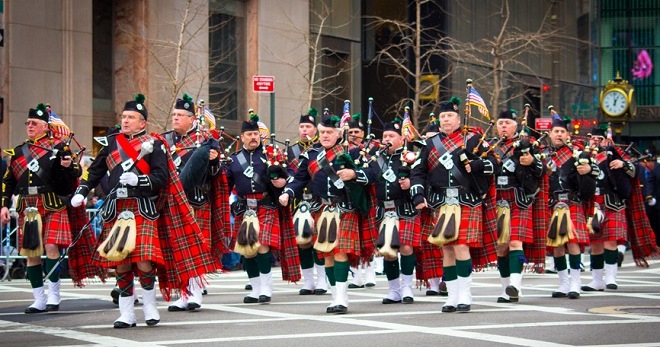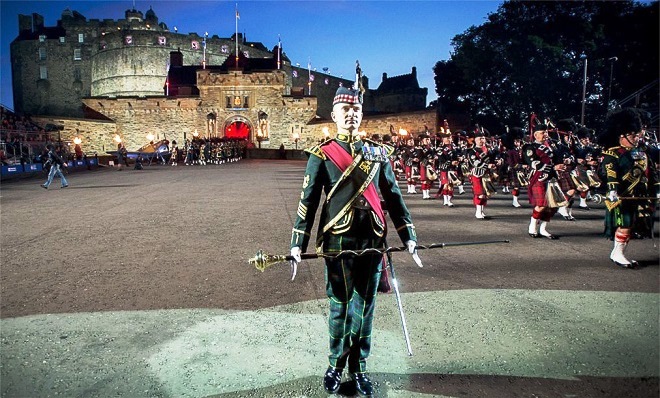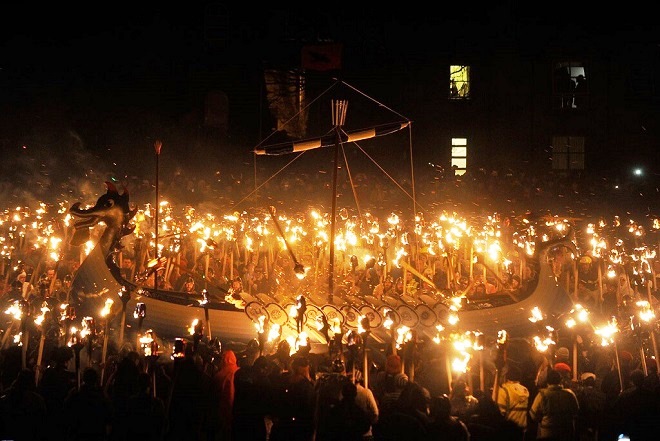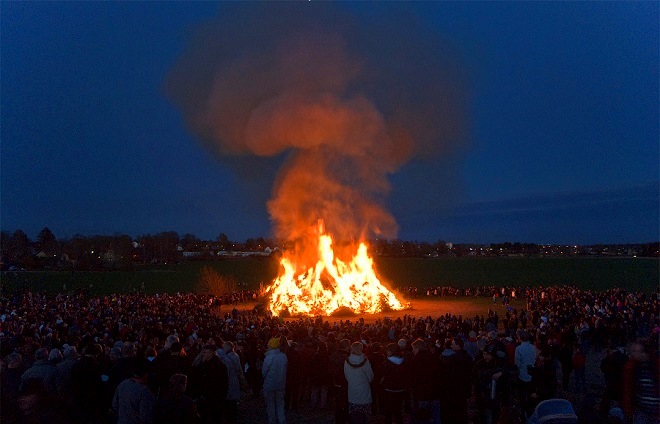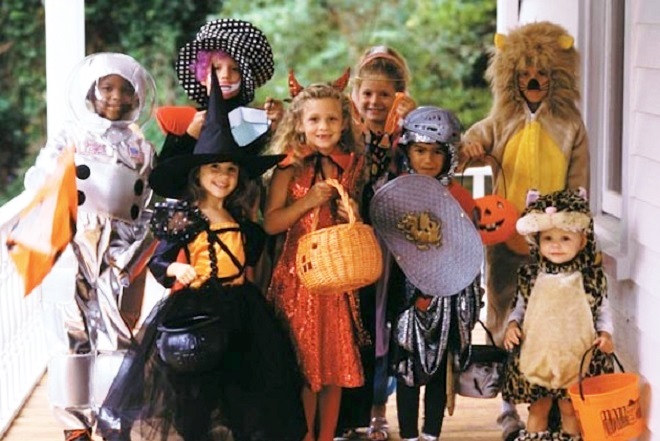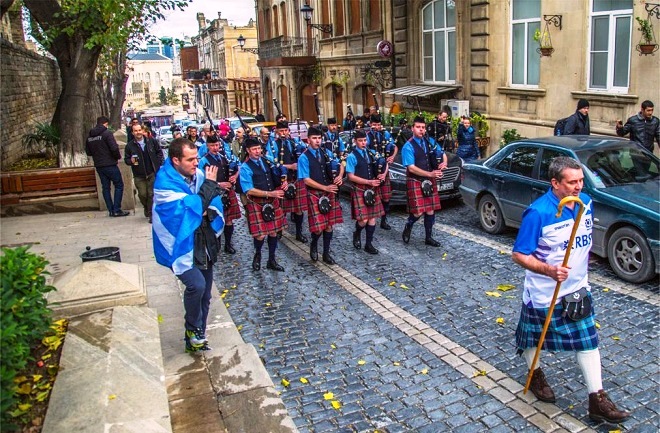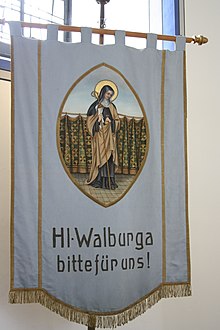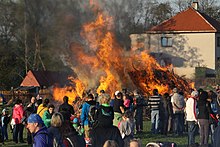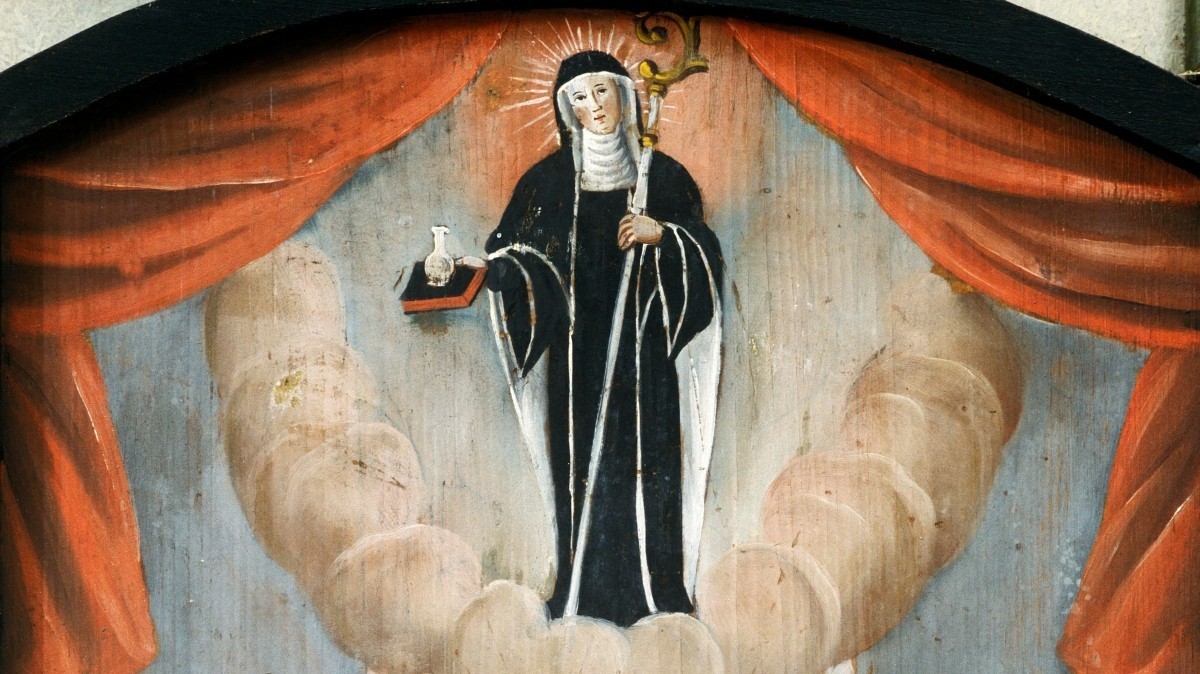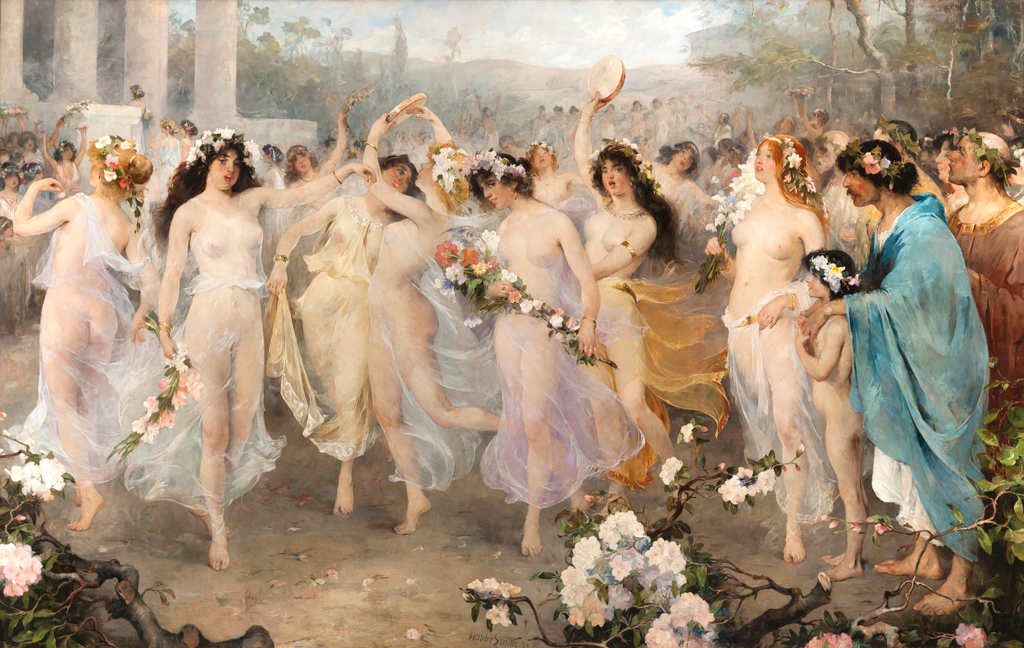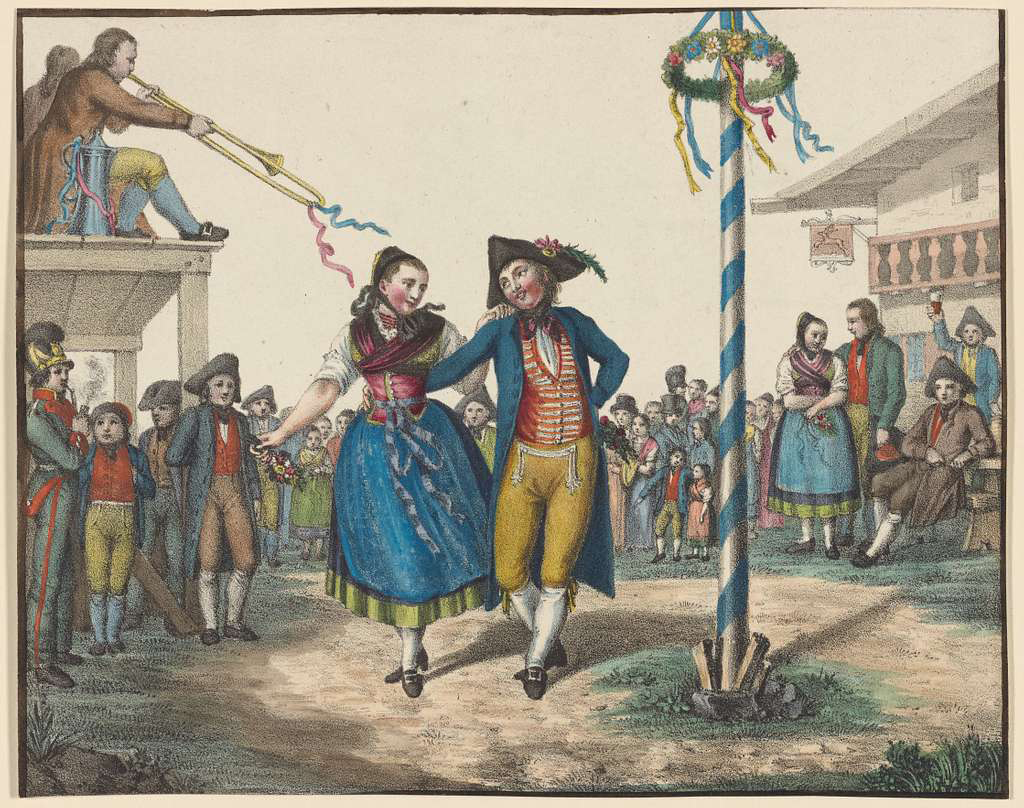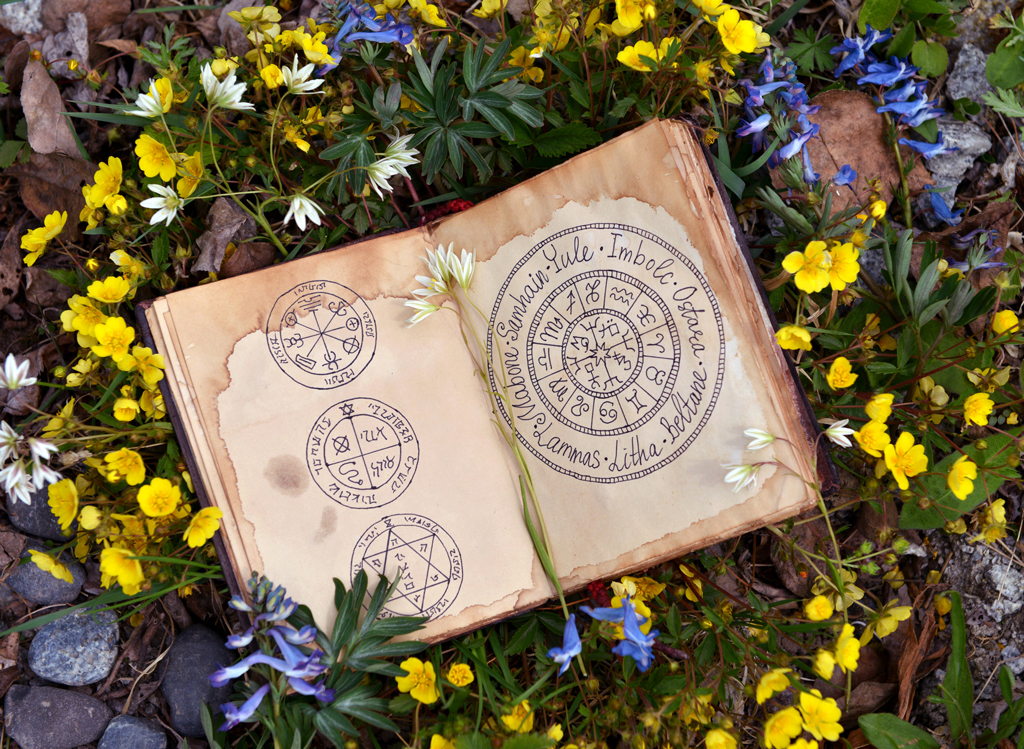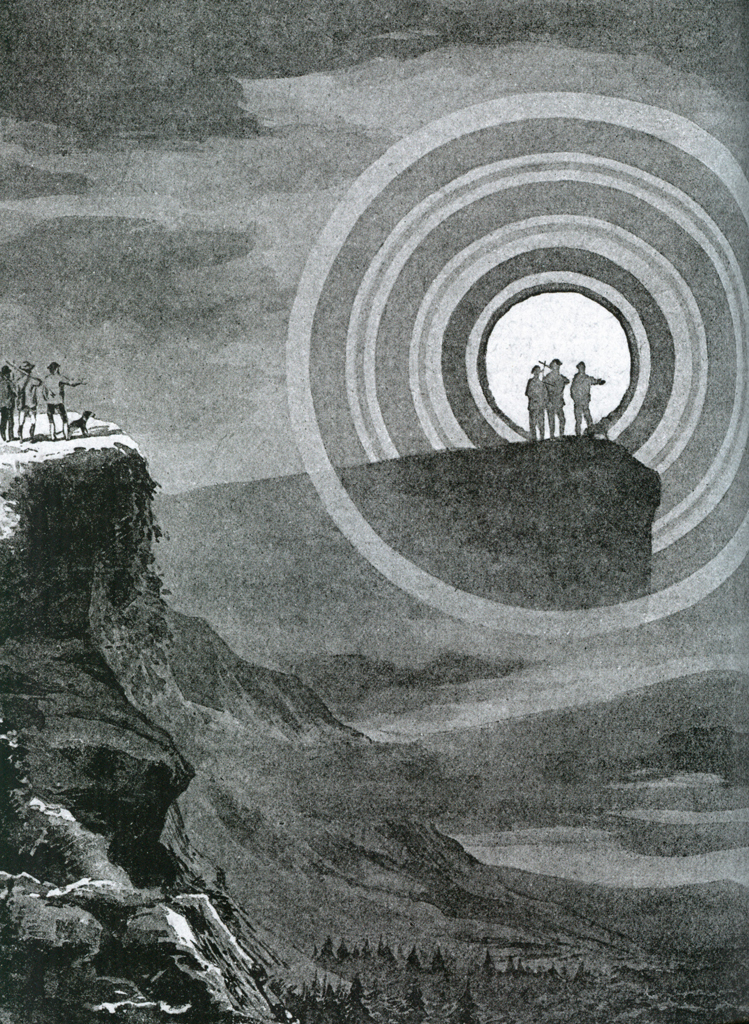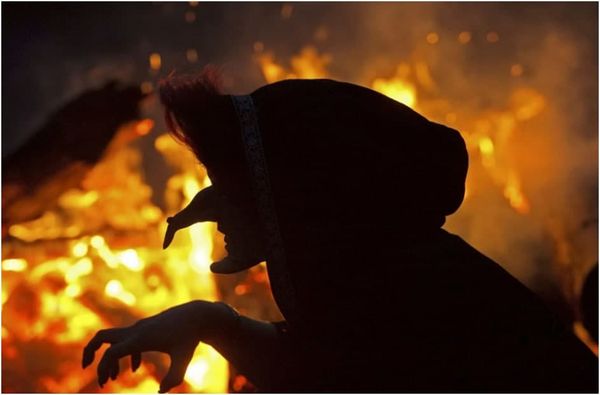👁 35.4k (339 за неделю) ⏱️ 2 мин.
Ничто так ярко не отражает темперамент и самобытность народа как национальные праздники. Чтобы прикоснуться к культуре другой страны, постичь ее специфику, традиции и обычаи, необходимо познакомиться с историческими датами, которые массово отмечаются в стране. Шотландские праздники представляют собой уникальное сочетание языческих, древнекельтских, христианских событий, а также дней рождения знаменитых шотландцев, которые внесли весомый вклад в развитие страны и ее становление на мировой арене.
Праздник Celtic Connections
Практически во всех странах, где когда-то проживали кельты, сохранился обычай отмечать праздники этого народа. Интерес к кельтской культуре возрастает с каждым днем благодаря удивительным фестивалям, которые ежегодно проводятся в разных уголках Земли. Шотландия в этом смысле не исключение, поэтому здесь с 12 по 30 января в Глазго проводятся торжественные мероприятия, посвященные кельтам. Праздник называется Celtic Connections и сопровождается кельтской музыкой, танцами, пением, дегустацией старинных блюд и напитков.
День рождения Роберта Бернса
Вряд ли можно себе представить какое-либо государство, в котором настолько широко отмечают день рождения любимого национального поэта. В Шотландии Роберта Бернса считают героем, великим талантом и достоянием, равного которому нет. Шотландцы настолько гордятся творчеством своего соотечественника, проживавшего здесь в 18 веке, что 25 января официально объявлен государственным праздником, который чтит каждый истинный шотландец. В этот день в семьях принято устраивать особый ужин, который носит название Burns Supper, а на столе, в обязательном порядке должны присутствовать национальные блюда, в том числе картофель, репа, знаменитый хаггис, кранихен. Запивают все это качественным и крепким скотчем, который является неотъемлемым напитком на любом торжественном мероприятии. На улицах шотландских городов в этот день организовывают театрализованные представления, а местные жители надевают нарядные старинные костюмы, обмениваются шутками, четверостишиями любимого поэта, проводят конкурсы на чтение стихотворений Роберта Бернса, разыгрывают импровизированные сценки.
Праздник эпохи викингов

Вальпургиева ночь
30 апреля ежегодно шотландцы отмечают известный во всем мире праздник Вальпургиевой ночи. Согласно преданию, в этот день на шабаш собираются ведьмы и нечистая сила, которая веселится и совершает магические обряды. По одной из версий, Вальпургиева ночь была одним из самых почитаемых праздников древних кельтов, сегодня мероприятие олицетворяет скорый приход лета.
День независимости Шотландии
День независимости Шотландии можно назвать праздником-парадоксом. Являясь полноценной частью Соединенного Королевства, страна отмечает свою суверенность от Англии. Оказывается, торжество, проводимое 24 июня, касается исторических событий, произошедших в 1314 году, когда Шотландия обрела долгожданную свободу после победы Короля Шотландии Роберта над английским монархом Эдуардом II.
Фестиваль Highland Gatherings
Еще один праздник пришел в Шотландию от кельтов, которые являлись великолепными музыкантами и танцорами. В начале августа во многих населенных пунктах Шотландии проходят крупномасштабные фестивали, известные своими играми и музыкой. Называются такие мероприятия Highland Gatherings и длятся они на протяжении недели. Исторической подоплекой праздника считается день 1 августа, когда кельты с размахом отмечали начало нового сезона. По традиции, люди семьями выходили в поле и торжественно срезали первые колосья пшеницы, после чего приходила пора сбора урожая. В эти дни шотландцы разжигают на возвышенностях костры, устраивают посиделки с песнями, танцуют, веселятся, желают друг другу благодатного года, богатства и удачи в делах.
Праздник, посвященный Святому Андрею
Как известно, праведник Андрей считается национальным символом Шотландии и покровителем страны и ее народа. На флаге государства изображен равноосный крест, который известен во всем мире как Андреевский. В память о святом, который, по преданию, похоронен на территории Шотландии, 30 ноября местные жители чествуют его и вспоминают добрые дела и обряды, связанные с великомучеником.
Праздники в Шотландии
Ничто так не отражает самобытность и традиции народа Шотландии, как национальные праздники. Если вы мечтаете прикоснуться к культуре, постичь ее специфику и уникальность, то посетите любой местный фестиваль. В это время вы познакомитесь с древнекельтскими обычаями, узнаете о важных исторических и христианских событиях страны.
Чем интересны праздники в Шотландии?
Культура и традиции населения формировались под влиянием языческих и кельтских происшествий. Праздники Шотландии мало схожи с праздниками, которые мы привыкли отмечать в России, некоторые из них связаны с виски, другие – с огнем, третьи – с известными писателями и т.д. История данной страна тесно переплетается с прошлым Великобритании, их традиции имеют одинаковые черты, однако мероприятия отмечаются по разным сценариям.
Сегодня Шотландия входит в состав Великобритании, но праздники здесь есть не только национальные, но и локальные, последние отмечаются только шотландцами. Данные мероприятия являются своеобразным проявлением культуры народа, поэтому они всегда интересны и привлекательны для туристов.
Самые популярные праздники в Шотландии
Если вы собираетесь посетить эту страну и не знаете, когда лучше сюда приехать, чтобы насладиться торжественной и веселой атмосферой, то ориентируйтесь на список праздников в Шотландии, который представлен ниже:
- Новый год – его начинают отмечать 29-30 декабря и заканчивают 1-2 января. Это праздник в Шотландии называют Хогманай. В новогодний вечер люди катают бочки с дегтем и таким образом сжигают всё плохое. Затем вся семья собирается у камина, открывают входную дверь настежь, ожидая первого гостя, который должен принести виски, хлеб, печенье и небольшой уголек, символизирующий тепло и богатство. После этого люди пьют эль с пряностями и угощают им всех прохожих. На столе присутствует индейка, тушеная брюссельская капуста, песочный пирог, украшенный орехами и марципановыми фигурками. Это веселое и шумное событие, когда принято переодеваться в костюмы, петь песни, рассказывать стихи и колядовать.
- День рождения Роберта Бернса – это любимый национальный поэт, творчеством которого гордятся шотландцы, поэтому 25 января здесь объявлен государственным праздником. Бернса считают героем страны, великим достоянием и талантом. В этот день местные жители устраивают особый ужин, именуемый Бурнс Суппер (Burns Supper). На столе обязательно присутствуют традиционные блюда, например, кранихен, хаггис, репа и картофель, а запивают еду крепким скотчем. На улицах проходят театрализованные представления, люди наряжаются в старинные костюмы и обмениваются шутками.
- Праздник эпохи викингов – является одним из самых интересных в Шотландии, называется Апхелио и отмечается 29 января. Он посвящен историческим событиям, когда отважные воины совершали набеги на территорию островов Шотландии. В этот день по улицам города Леруик ходят толпы переодетых бородатых разбойников, которые держат в руках зажженные факелы, трубят в военные горны и несут гигантский корабль, украшенный драконом. В конце вечера ладью торжественно сжигают.
- Вальпургиева ночь – праздник отмечают в Шотландии 30 апреля и 1 мая, когда, согласно преданиям, ведьмы собираются на шабаш. Данное событие стали отмечать благодаря древним кельтам, которые очень трепетно относились к традициям, ведь с этого дня у них наступало лето. По этой причине все действия посвящались солнцу и плодородию. Так как католическая церковь запрещала мероприятия в честь «нечисти», то этот день официально посвящен монахине Вальбург. Она творила настоящие чудеса, а после смерти была канонизирована.
- День независимости Шотландии – праздник-парадокс, отмечаемый 24 июня. Дело в том, что в 1314 году король Роберт победил английского монарха Эдуарда Второго, и страна обрела свободу. Сегодня Шотландия снова входит в состав Великобритании, поэтому не является свободным государством. В настоящее время в этот день на улицах страны проходят красочные фестивали, которые сопровождаются народными гуляниями, концертами, традиционными песнями и танцами.
- Фестиваль «Т ин зе Парк» – это главный музыкальный праздник в Шотландии, представляющий собой сумасшедший марафон, который проходит в начале июля уже больше 20 лет. Он длится несколько дней, а публика живет в палаточном городке, оборудованном игровым залом, спа-зоной, кинотеатром, баром и душевыми кабинками. На фестивале часто выступают звезды мировой величины, в том числе Эминем, Рианна, Бейонсе, Арктик Манкис, Снуп Дог и т.д. К слову, перед началом мероприятия организаторы проводят опросы в соцсетях, где люди могут сами выбирать, кого именно хотят услышать. Ежегодно сюда съезжается более 80 тыс. человек и не менее 150 исполнителей.
- Фестиваль Хайгленд Газеринг – это праздник отмечают в Шотландии благодаря кельтам, которые являлись отличными танцорами и музыкантами. Он посвящен сбору урожаю, поэтому начинается 1 августа и длится неделю. В эти дни местные жители разжигают костры, веселятся вокруг них, устраивают посиделки, желают друг другу удачи в делах и богатства, а также переодеваются в смешные костюмы.
- Фестиваль Фриндж – проходит в Эдинбурге и является неофициальной частью международного фестиваля искусств. Это культурное событие сопровождается различными программами, оно отмечается в августе и длится 3 недели. В это время в городских театрах проходят детские и взрослые спектакли, посвященные древнегреческим и современным трагедиям, а также комедии, шоу, мюзиклы, оперы и арт-перформансы. Также актеры выступают на импровизированных сценах, число которых превышает цифру 250, ведь показать свой талант может каждый житель страны. На праздник съезжаются самодеятельные коллективы, актеры, студенты и различные исполнители. К слову, около 20% представлений, показанных в период Фриндж, становятся мировыми премьерами.
- Хеллоуин – один из популярнейших праздников в Шотландии, который также возник благодаря кельтам. Его отмечают 31 октября, накануне Дня всех святых. В этот дети переодеваются в различные костюмы, ходят по соседям и собирают конфеты. Улицы и дома принято украшать гирляндами, искусственной паутиной, фигурами пауков, летучих мышей и тыквами.
- День Святого Андрея – покровитель Шотландии, который также является символом страны и ее народа. На государственном флаге даже изображен Андреевский крест, известный на весь мир. Ежегодно 30 ноября коренные жители вспоминают добрые дела, совершенные великомучеником, и проводят специальные обряды. В этот день устраиваются вечеринки, оформленные в национальном стиле и сопровождаемые народными танцами, песнями и игрой на волынке. На стол принято выставлять традиционную еду.
Статьи по теме:

Отправляясь в Шотландию, стоит заранее определиться с транспортом. По стране можно путешествовать на автобусе, автомобиле или самолете, а в городах передвигаться на такси либо общественном транспорте. Давайте узнаем все подробности! |
Шотландия – горная страна, и нередко сюда приезжают ради зимнего отдыха. Здесь имеется несколько горнолыжных курортов, где желающие смогут улучшить навыки или научиться кататься на лыжах, сноубордах, санях. Давайте выясним, какие из горнолыжных центров Шотландии самые популярные. |

Узнать много нового о чужой стране можно не только из поездки. Наша статья расскажет 20 самых интересных и необычных фактов о Шотландии. Узнайте о том, для чего горцы носят клетчатые юбки, какую роль сыграли в истории страны викинги, и в каком шотландском замке любят отдыхать английские монархи. |

Чтобы узнать Шотландию, недостаточно пройтись по улицам Эдинбурга и посетить пару-тройку старинных замков. Обязательно побывайте хотя бы нескольких музеях страны. Их здесь очень много, а чтобы узнать, какие самые интересные – читайте нашу статью. |
This article is about the eve of the feast day of St Walpurga. For George Balanchine’s 1975 ballet, see Walpurgisnacht Ballet. For the album by GFriend, see Walpurgis Night (album).
|
|
|---|---|

Walpurgisnacht at the open-air theatre in Heidelberg |
|
| Also called |
|
| Observed by |
|
| Type | Christian, cultural |
| Celebrations | Bonfires, dancing[1] |
| Observances | Mass and Service of Worship; pilgrimage to the Church of Saint Walpurgis in Eichstätt[2] |
| Date | 30 April – 1 May |
| Frequency | Annual |
| Related to | May Day, Easter |
Walpurgis Night (),[3][4] an abbreviation of Saint Walpurgis Night (from the German Sankt-Walpurgisnacht [zaŋkt valˈpʊʁɡɪsˌnaxt]), also known as Saint Walpurga’s Eve (alternatively spelled Saint Walburga’s Eve), is the eve of the Christian feast day of Saint Walpurga, an 8th-century abbess in Francia, and is celebrated on the night of 30 April and the day of 1 May.[5][6] This feast commemorates the canonization of Saint Walpurga and the movement of her relics to Eichstätt, both of which occurred on 1 May 870.[7]
Saint Walpurga was hailed by the Christians of Germany for battling «pest, rabies, and whooping cough, as well as against witchcraft».[8] Christians prayed to God through the intercession of Saint Walpurga in order to protect themselves from witchcraft,[9][8][10] as Saint Walpurga was successful in converting the local populace to Christianity.[11] In parts of Europe, people continue to light bonfires on Saint Walpurga’s Eve in order to ward off evil spirits and witches.[1][12] Others have historically made Christian pilgrimages to Saint Walburga’s tomb in Eichstätt on the Feast of Saint Walburga, often obtaining vials of Saint Walburga’s oil.[2][13]
It is suggested that Walpurgis Night is linked with older May Day festivals in northern Europe, which also involved lighting bonfires at night, for example the Gaelic festival Beltane.[7]
Local variants of Walpurgis Night are observed throughout Northern and Central Europe in the Netherlands, Germany, the Czech Republic, Slovakia, Slovenia, Sweden, Lithuania, Latvia, Finland, and Estonia. In Finland, Denmark and Norway, the tradition with bonfires to ward off the witches is observed as Saint John’s Eve, which commemorates the Nativity of Saint John the Baptist.[12]
Name[edit]
The date of Saint Walpurga’s canonization came to be known as Sankt Walpurgisnacht («Saint Walpurga’s night») in German.[6][1][12] The name of the holiday is often shortened to Walpurgisnacht (German), Valborgsmässoafton («Valborg’s Mass Eve», Swedish), Vappen (Finland Swedish), Vappu (Finnish), Volbriöö (Estonian), Valpurgijos naktis (Lithuanian), Valpurģu nakts or Valpurģi (Latvian), and čarodějnice or Valpuržina noc (Czech). In English, it is known as Saint Walpurga’s Night, Saint Walburga’s Night, Walpurgis Night, Saint Walpurga’s Eve, Saint Walburga’s Eve, the Feast of Saint Walpurga or the Feast of Saint Walburga.[13][14] The Germanic term Walpurgisnacht is recorded in 1668 by Johannes Praetorius[15] as S. Walpurgis Nacht or S. Walpurgis Abend. An earlier mention of Walpurgis and S. Walpurgis Abend is in the 1603 edition of the Calendarium perpetuum of Johann Coler,[16] who also refers to the following day, 1 May, as Jacobi Philippi, feast day of the apostles James the Less and Philip in the Western Christian calendar of saints.
History[edit]
The relics of Saint Walpurga are housed at Saint Peter’s Church in Munich, where they are venerated, especially on 25 February (Saint Walpurga’s death date) and 1 May (Saint Walpurga’s canonization date), both of which are observed as the Feast of Saint Walpurga, depending on locality.
The festival of Walpurgis Night is named after the English Christian missionary Saint Walpurga (c. 710–777/9). The daughter of Saint Richard the Pilgrim and sister of Saint Willibald, Saint Walpurga (also known as Saint Walpurgis or Walburga) was born in Devon, England in A.D. 710.[17] Born into a prominent Anglo-Saxon family, Saint Walpurga studied medicine and became a Christian missionary to Germany, where she founded a double monastery in Heidenheim.[18] As such, Christian artwork often depicts her holding bandages in her hand.[18] As a result of Saint Walpurga’s evangelism in Germany, the people there converted to Christianity from heathenism.[19][20] In addition, «the monastery became an education center and ‘soon became famous as a center of culture'».[21] Saint Walpurga was also known to repel the effects of witchcraft.[10][9] Saint Walpurga died on 25 February 777 (some sources say 778 or 779) and her tomb, to this day, produces holy oil (known as Saint Walburga’s oil), which is said to heal sickness; Benedictine nuns distribute this oil in vials to Christian pilgrims who visit Saint Walpurga’s tomb.[13][22]
The canonization of Walpurga and the movement of her relics to Eichstätt occurred on 1 May in the year 870, thus leading to the Feast of Saint Walpurga and its eve, Walpurgis Night, being popularly observed on this date.[7] She quickly became one of the most popular saints in England, Germany, and France. When the bishop had Saint Walpurga’s relics moved to Eichstätt, «miraculous cures were reported as her remains traveled along the route».[17] Miracle cures were later reported from ailing people who anointed themselves with a fluid known as Walburga’s oil that drained from the rock at her shrine at Eichstatt.[17]
The date of Walpurgis Night coincided with an older May Eve festival, celebrated in much of northern Europe with the lighting of bonfires at night.[7] A variety of festivals of pre-Christian origin had been celebrated at this time (halfway between the spring equinox and summer solstice) to mark the beginning of summer, including Beltane in Ireland and Britain.[7] Folklorist Jack Santino says «Her day and its traditions almost certainly are traceable to pre-Christian celebrations that took place at this time, on the first of May».[23] Art historian Pamela Berger noted Walpurga’s association with sheaves of grain, and suggested that her cult was adapted from pagan agrarian goddesses.[24]
In modern times, many Christians continue to make religious pilgrimages to Saint Walburga’s tomb in Eichstätt on Saint Walburga’s Day; in the 19th century, the number of pilgrims travelling to the Church of St. Walpurgis was described as «many thousand».[2] Due to 1 May the date of Saint Walpurga’s feast, it has become associated with other May Day celebrations and regional traditions,[25] especially in Finland and Sweden.[26] Given that the intercession of Saint Walpurga was believed to be efficacious against evil magic, medieval and Renaissance tradition held that, during Walpurgis Night, witches celebrated a sabbath and evil powers were at their strongest. In German folklore, Walpurgis Night was believed to be the night of a witches’ meeting on the Brocken, the highest peak in the Harz Mountains, a range of wooded hills in central Germany.[27] To ward off evil and protect themselves and their livestock, people would traditionally light fires on the hillsides,[10][9][1] a tradition that continues in some regions today.[12] In Bavaria, the feast day is sometimes called Hexennacht (Dutch: heksennacht), literally «Witches’ Night», on which revelers dress as witches and demons, set off fireworks, dance and play loud music, which is said to drive the witches and winter spirits away.[27]
Regional variations[edit]
Czech Republic[edit]
Burning of the witches in the Czech Republic
30 April is Pálení čarodějnic (‘Burning of the witches’) or čarodějnice (‘The witches’) in the Czech Republic. Huge bonfires up to 8 metres (26 ft) tall with a witch figure are built and burnt in the evening, preferably on top of hills. Young people gather around. Sudden black and dense smoke formations are cheered as «a witch flying away». An effigy of a witch is held up and thrown into a bonfire to burn.[1]
In some places, it is customary to burn a puppet representing a witch on the bonfire. It is still a widespread feast in the Czech Republic, practiced since the pagan times.
As evening advances to midnight and fire is on the wane, it is time to go search for a cherry tree in blossom. This is another feast, connected with 1 May. Young women should be kissed past midnight (and during the following day) under a blossoming cherry (or if unavailable, another blossoming) tree, as they «will not dry up» for an entire year.[citation needed] The First of May is celebrated then as «the day of those in love», in reference to the famous incipit of the poem Máj by Karel Hynek Mácha (Byl pozdní večer – první máj – / večerní máj – byl lásky čas; «Late evening, on the first of May— / The twilit May—the time of love», translation by Edith Pargeter).
England[edit]
In Lincolnshire, Walpurgis Night was observed in rural communities until the second half of the 20th century, with a tradition of hanging cowslips to ward off evil.[28]
Estonia[edit]
In Estonia, Volbriöö is celebrated throughout the night of 30 April and into the early hours of 1 May, where 1 May is a public holiday called «Spring Day» (Kevadpüha). Volbriöö is an important and widespread celebration of the arrival of spring in the country. Influenced by German culture, the night originally stood for the gathering and meeting of witches. Modern people still dress up as witches to wander the streets in a carnival-like mood.
The Volbriöö celebrations are especially vigorous in Tartu, the university town in southern Estonia. For Estonian students in student corporations (Estonian fraternities and sororities), the night starts with a traditional procession through the streets of Tartu, followed by visiting each other’s corporation houses throughout the night.
Finland[edit]
The crowd in front of Lasipalatsi in Helsinki, in 1960.
In Finland, Walpurgis night (Finnish: Vappu; Swedish: Vappen, Valborg) is one of the four biggest holidays along with Christmas Eve, New Year’s Eve, and Midsummer (Juhannus — Midsommar).[5] Walpurgis witnesses the biggest carnival-style festival held in Finland’s cities and towns. The celebration, which begins on the evening of 30 April and continues on 1 May, typically centres on the consumption of sima, sparkling wine and other alcoholic beverages. Student traditions, particularly those of engineering students, are one of the main characteristics of Vappu. Since the end of the 19th century, this traditional upper-class feast has been appropriated by university students. Many high school alumni wear the black and white student cap and many higher education students wear student coveralls. One tradition is to drink sima, a home-made low-alcohol mead, along with freshly cooked tippaleipä.
In the capital, Helsinki, and its surrounding region, fixtures include the capping (on 30 April at 6 pm) of Havis Amanda, a nude female statue in Helsinki, and the biennially alternating publications of ribald matter called Äpy and Julkku, by engineering students of Aalto University. Both are sophomoric; but while Julkku is a standard magazine, Äpy is always a gimmick. Classic forms have included an Äpy printed on toilet paper and on a bedsheet. Often, Äpy has been stuffed inside standard industrial packages, such as sardine cans and milk cartons. For most university students, Vappu starts a week before the day of celebration. The festivities also include a picnic on 1 May, which is sometimes more lavish, particularly in Ullanlinnanmäki in central Helsinki.
In Turku, it has become a tradition to cap the Posankka statue.
Vappu coincides with the socialist International Workers’ Day parade. Expanding from the parties of the left, the whole of the Finnish political scene has adopted Vappu as the day to go out on stumps and agitate. This is not limited only to political activists; many institutions, such as the Lutheran Church of Finland, have followed suit, marching and making speeches. Left-wing activists of the 1970s still party on May Day. Carnivals are arranged, and many radio stations play leftist songs, such as The Internationale.
Traditionally, 1 May is celebrated by the way of a picnic in a park. For most, the picnic is enjoyed with friends on a blanket with food and sparkling wine. Some people arrange extremely lavish picnics with pavilions, white tablecloths, silver candelabras, classical music and extravagant food. The picnic usually starts early in the morning, where some of the previous night’s party-goers continue their celebrations from the previous night.
Some student organisations reserve areas where they traditionally camp every year. Student caps, mead, streamers and balloons have their role in the picnic and the celebration as a whole.
Germany[edit]
Lewis Morrison as «Mephistopheles» in Faust!: «The Brocken». Poster for a theatrical performance of Goethe’s play showing Mephistopheles conjuring supernatural creatures on the German mountain, the Brocken (or Blocksberg), which according to the tale is the scenery for the Walpurgisnight, from 30 April to 1 May.
On the Feast of Saint Walburga, «many thousand» people have made Christian pilgrimages to Saint Walburga’s tomb in Eichstätt on the Feast of Saint Walburga, often obtaining vials of Saint Walburga’s oil.[2][13]
In Germany, Hexennacht (‘Witches’ Night’), the night from 30 April to 1 May, is the night when witches are reputed to hold a large celebration on the Brocken and await the arrival of spring and is held on the same night as Saint Walpurgis Night (Sankt Walpurgisnacht).
Walpurgisnacht Night (in German folklore) the night of 30 April (May Day’s eve), when witches meet on the Brocken mountain and hold revels with the Devil…
Brocken is the highest of the Harz Mountains of north central Germany. It is noted for the phenomenon of the Brocken spectre and for witches’ revels which reputedly took place there on Walpurgis night.
The Brocken Spectre is a magnified shadow of an observer, typically surrounded by rainbow-like bands, thrown onto a bank of cloud in high mountain areas when the sun is low. The phenomenon was first reported on the Brocken.[29][incomplete short citation]
A scene in Goethe’s Faust Part One is called «Walpurgisnacht,» and one in Faust Part Two is called «Classical Walpurgisnacht.» The last chapter of book five in Thomas Mann’s The Magic Mountain is also called «Walpurgisnacht.» In Edward Albee’s 1962 play Who’s Afraid of Virginia Woolf?, Act Two is entitled «Walpurgisnacht.»
From Bram Stoker’s short story, Dracula’s Guest, an Englishman (whose name is never mentioned) is on a visit to Munich before leaving for Transylvania. It is Walpurgis Night, and in spite of the hotelier’s warning not to be late coming back, the young man later leaves his carriage and wanders toward the direction of an abandoned «unholy» village. As the carriage departs with the frightened and superstitious driver, a tall and thin stranger scares the horses at the crest of a hill.
In some parts of northern coastal regions of Germany, the custom of lighting huge fires is still kept alive to celebrate the coming of May, while most parts of Germany have a derived Christianized custom around Easter called «Easter fires» (Osterfeuer).
In rural parts of southern Germany, it is part of popular youth culture to play pranks such as tampering with neighbours’ gardens, hiding possessions, or spraying graffiti on private property.
In Berlin, traditional leftist May Day riots usually start at Walpurgis Night in the Mauerpark in Prenzlauer Berg. There is a similar tradition in the Schanzenviertel district of Hamburg, though in both cases, the situation has significantly calmed down in the past few years.
The Netherlands[edit]
As in all Germanic countries, Sankt Walpurgisnacht was celebrated in areas of what is now the Netherlands.[30] It has not been celebrated recently due to the national Koninginnedag (Queen’s Day) falling on the same date, though the new koningsdag (King’s Day) is on 27 April. The island of Texel celebrates a festival known as the ‘Meierblis [nl]‘ (roughly translated as ‘May-Blaze’) on that same day, where bonfires are lit near nightfall, just as on Walpurgis, but with the meaning to drive away the remaining cold of winter and welcome spring.[citation needed] Occasional mentions to the ritual occur, and at least once a feminist called group co-opted the name to call for attention to the position of women (following the example of German women’s organizations),[31] a variety of the Take Back the Night phenomenon.[32]
Still, in recent years a renewed interest in pre-Christian religion and culture has led to renewed interest in Heksennacht (Witch’s Night) as well.[33] In 1999, suspicions were raised among local Reformed party members in Putten, Gelderland of a Heksennacht festival celebrated by Satanists. The party called for a ban. That such a festival even existed, however, and that it was ‘Satanic’ was rejected by most others.[34] The local Church in Dokkum, Friesland organized a Service in 2003 to pray for the Holy Spirit to, according to the church, counter the Satanic action.[35]
Sweden[edit]
While the name Walpurgis is taken from the 8th-century British Dumnonian Christian missionary Saint Walburga, Valborg, as it is called in Swedish, also marks the arrival of spring.[5] The forms of celebration vary in different parts of the country and between different cities. Walpurgis celebrations are not a family occasion but rather a public event, and local groups often take responsibility for organising them to encourage community spirit in the village or neighbourhood. Celebrations normally include lighting the bonfire, choral singing and a speech to honour the arrival of the spring season, often held by a local celebrity.
In the Middle Ages, the administrative year ended on 30 April. Accordingly, this was a day of festivity among the merchants and craftsmen of the town, with trick-or-treat, dancing and singing in preparation for the forthcoming celebration of spring. Sir James George Frazer in The Golden Bough writes, «The first of May is a great popular festival in the more midland and southern parts of Sweden. On the eve of the festival, huge bonfires, which should be lighted by striking two flints together, blaze on all the hills and knolls.»[36]
Walpurgis bonfires are part of a Swedish tradition dating back to the early 18th century. At Walpurgis (Valborg), farm animals were let out to graze and bonfires (majbrasor, kasar) lit to scare away predators. In Southern Sweden, an older tradition, no longer practiced, was for the younger people to collect greenery and branches from the woods at twilight. These were used to adorn the houses of the village. The expected reward for this task was to be paid in eggs.
A big crowd, mostly students in typical Swedish white student caps, participating in the traditional Saint Walpurgis Night celebration with song outside the Castle in Uppsala. The silhouette of the cathedral towers may be seen in the background. To the right are banners and standards of the student nations. Image from c. 1920.
Choral singing is a popular pastime in Sweden, and on Walpurgis Eve virtually every choir in the country is busy. Singing traditional songs of spring is widespread throughout the country. The songs are mostly from the 19th century and were spread by students’ spring festivities. The strongest and most traditional spring festivities are also found in the old university cities, such as Uppsala and Lund, where undergraduates, graduates, and alumni gather at events that last most of the day from early morning to late night on 30 April, or siste april («The Last Day of April») as it is called in Lund, or sista april as it is called in Uppsala. For students, Walpurgis Eve heralds freedom. Traditionally the exams were over and only the odd lecture remained before term ends. On the last day of April, the students don their characteristic white caps and sing songs of welcome to spring, to the budding greenery and to a brighter future.
More modern Valborg celebrations, particularly among Uppsala students, often consist of enjoying a breakfast including champagne and strawberries. During the day, people gather in parks, drink considerable amounts of alcoholic beverages, barbecue, and generally enjoy the weather, if it happens to be favorable.
In Uppsala, since 1975, students honor spring by rafting on Fyris river through the center of town with rickety, homemade, in fact quite easily wreckable, and often humorously decorated rafts.
Several nations also hold «Champagne Races» (Swedish: Champagnegalopp), where students go to drink and spray champagne or sparkling wine on each other. The walls and floors of the old nation buildings are covered in plastic for this occasion, as the champagne is poured around recklessly and sometimes spilled enough to wade in. Spraying champagne is, however, a fairly recent addition to the Champagne Race. The name derives from the students running down the slope from the Carolina Rediviva libra to drink champagney, toward the Student Natione.
In Linköping many students and former students begin the day at the park Trädgårdföreningen, in the field below Belvederen where the city laws permit alcohol, to drink champagne breakfast in a similar way to Uppsala. Later, at three o’clock, the students and public gather at the courtyard of Linköping Castle. Spring songs are sung by the Linköping University Male Voice Choir, and speeches are made by representatives of the students and the university professors.
In Gothenburg, the carnival parade, The Cortège, which has been held since 1909 by the students at Chalmers University of Technology, is an important part of the celebration. It is seen by around 250,000 people each year. Another major event is the gathering of students in Garden Society of Gothenburg to listen to student choirs, orchestras, and speeches. An important part of the gathering is the ceremonial donning of the student cap, which stems from the time when students wore their caps daily and switched from black winter cap to white summer cap.
In Umeå, there is an old tradition of having local bonfires. During recent years, however, there has also been a tradition of celebrating Walpurgis at the Umeå University campus. The university organizes student choir singing, as well as other types of entertainment and a speech by the president of the university. Different stalls sell hot dogs, candy, soft drinks, etc.
United States[edit]
The Church of Satan was founded on Sankt Walpurgisnacht in 1966.[37][38] Founder Anton Szandor LaVey states in The Satanic Bible that besides one’s own birthday, Walpurgisnacht ranks as an important Satanic holiday, noting the Eve of May has been memorialized as «symbolizing the fruition of the spring equinox»,[39] and chose the date well aware of the date’s traditional association with witchcraft.
[40]
Additionally, The Satanic Temple celebrates Hexennacht as «a solemn holiday to honor those who were victimized by superstition».[41]
See also[edit]
- Allhallowtide
- Bald Mountain (folklore)
- Beltane
- Diwali
- Easter witch
- May Day
- Mefistofele
- Noc Walpurgi, 2015 film
References[edit]
- ^ a b c d e Galván, Javier A. (19 June 2014). They Do What? A Cultural Encyclopedia of Extraordinary and Exotic Customs from around the World. ABC-CLIO. p. 51. ISBN 9781610693424.
Early Christians in this region believed that, during Walpurgis Night, evil powers were at their strongest, and people had to protect themselves and their livestock by lighting fires on hillsides.
- ^ a b c d Murray, J. (1843). A handbook for travellers in southern Germany. p. 90.
In the Church of St. Walpurgis are preserved the remains of that Saint. They are interred beneath the high altar, and a stream of oil, which obtains the highest repute for its medicinal qualities, flows from them, between October and May. On St. Walpurgis’ Day, May 1, many thousand pilgrims repair to her shrine.
- ^ Jones, Daniel (2011). Roach, Peter; Setter, Jane; Esling, John (eds.). Cambridge English Pronouncing Dictionary (18th ed.). Cambridge University Press. ISBN 978-0-521-15255-6.
- ^ Wells, John C. (2008). Longman Pronunciation Dictionary (3rd ed.). Longman. ISBN 978-1-4058-8118-0.
- ^ a b c Williams, Victoria (21 November 2016). Celebrating Life Customs around the World. ABC-CLIO. p. 217. ISBN 9781440836596.
During the Walpurgisnacht Walpurgisnacht, or Walpurgis Night, is one of the names given to the night of April 30, the eve of Saint Walpurga’s feast day that falls on May 1. Since Saint Walpurga’s feast occurs on May 1 the saint is associated with May Day, especially in Finland and Sweden.
- ^ a b Neuer immerwährender Gregorianischer Kalender (in German). Jaquet. 1856. p. 330.
- ^ a b c d e Melton, J. Gordon (2011). Religious Celebrations. ABC-CLIO. p. 915. ISBN 9781598842050.
Her feast day commemorates both the movement of her relics to Eichstatt and her canonization, both of which occurred on May 1.
- ^ a b Mendelssohn-Bartholdy, Felix; Goethe, Johann Wolfgang von (2005). Die Erste Walpurgisnacht: Ballade von Goethe für Chor und Orchester. Yushodo Press Co. ISBN 9784841903966.
The term Walpurgis Night derives from the eighth-century Saint Walpurga. She came from England to Germany as a Christian missionary and was hailed for her powers against epidemics such as pest, rabies, and whooping cough, as well as against witchcraft.
- ^ a b c Chapru, Doleta (1977). A Festival of the English May. Folklore Village Farm. p. 3.
The Catholic Church chose May eve to honor St. Walpurga, protectress against magic arts. Walpurga was an English missionary to Germany in the eighth century.
- ^ a b c Canaday, John (2000). The Nuclear Muse: Literature, Physics, and the First Atomic Bombs. University of Wisconsin Press. p. 98. ISBN 9780299168544.
Walpurgis Night falls on the eve of the feast day of St. Walpurga, an English missionary who was celebrated in the Middle Ages as a protectress against magic. It was a night when witches were believed to ride freely through the land.
- ^ Upton, George Putnam (1912). The Standard Concert Guide. A.C. McClurg & Company. p. 294.
In his separate poem Goethe seeks to go back to the origin of the first Walpurgis Night. May-day eve was consecrated to Saint Walpurgis, who converted the Saxons from Druidism to Christianity, and on that night the evil spirits were said to be abroad.
- ^ a b c d Stark, Lucien (1998). Brahms’s Vocal Duets and Quartets with Piano. Indiana University Press. p. 100. ISBN 9780253334022.
Walpurgis Night, named for St. Walpurga (d. A.D. 777), an English saint whose feast day falls on May Day, is the evening of 30 April (May Day eve) when, as was widely held—particularly during medieval and Renaissance times—witches celebrate a sabbath. Still today there are places where bonfires are kept burning all night to repel the evil spirits.
- ^ a b c d Wunderli, Richard M. (1992). Peasant Fires. Indiana University Press. p. 46. ISBN 9780253207517.
Between Easter and Pentecost were many other celebrations and feast days. In Germany, for example, was celebrated the Feast of St. Walburga, or Walpurgisnacht, on April 30, the eve of May Day. Walburga was an eighth-century Anglo-Saxon nun and missionary to Franconia, particularly to Bischofsheim on the Tauber, just south of Niklashausen. Her bones were «translated» (that is, moved) on 30 April—which became her feast day—sometime during the 870s to Eichstätt, where her brother Willibald had been bishop. Ever since then an oily liquid has oozed out of the rock on which her tomb rests, and has been renowned among pilgrims for its great healing power.
- ^ Elvins, Mark (2002). Catholic Trivia. Gracewing Publishing. p. 146. ISBN 9780852445594.
- ^ Praetorius, Johannes (1668). Blockes-Berges Verrichtung oder ausführlicher geographischer Bericht von den hohen trefflich alt- und berühmten Blockes-Berge: ingleichen von der Hexenfahrt und Zauber-Sabbathe, so auff solchen Berge die Unholden aus gantz Teutschland Jährlich den 1. Maij in Sanct-Walpurgis-Nachte anstellen sollen; Aus vielen Autoribus abgefasset und mit schönen Raritäten angeschmücket sampt zugehörigen Figuren; Nebenst einen Appendice vom Blockes-Berge wie auch des Alten Reinsteins und der Baumans Höle am Hartz (in German). Leipzig: Scheiber.
- ^ Coler, Johann (1603). M. Iohannis Coleri Calendarium Perpetuum, Et Libri Oeconomici: Das ist, Ein stetswerender Calender, darzu sehr nützliche vnd nötige Haußbücher: Vor die Haußwirt, Ackerleut, Apotecker, Kauffleute, Wanderßleute, Weinhern, Gärtner, den gemeinen Handwerckßleuten, und all den jenigen, so mit Wirtschafften oder Gastungen umbgehen (in German). Wittemberg: Paul Helwig. p. 89. Retrieved 15 August 2011.
- ^ a b c «The favors of St. Walburga». Our Sunday Visitor. 16 April 2006. Archived from the original on 25 March 2018.
- ^ a b Accardo, Pasquale (6 December 2012). The Medical Almanac: A Calendar of Dates of Significance to the Profession of Medicine, Including Fascinating Illustrations, Medical Milestones, Dates of Birth and Death of Notable Physicians, Brief Biographical Sketches, Quotations, and Assorted Medical Curiosities and Trivia. Springer Science & Business Media. p. 80. ISBN 9781461203650.
- ^ Smith, George (1884). Short History of Christian Missions: From Abraham and Paul to Carey, Livingstone and Duff. T. & T. Clark. p. 89.
Walpurga, who at the special request of Boniface had accompanied her brother Winibald and kinsman Willibald from Dorsetshire to help the much-toiling missionary in Thuringia, represents a band of devoted women who founded sisterhoods in many parts of Germany, and tamed the people by their Christ-like tenderness and self-sacrifice.
- ^ Sanneh, Lamin; McClymond, Michael (23 May 2016). The Wiley Blackwell Companion to World Christianity. John Wiley & Sons. p. 80. ISBN 9781405153768.
English and Hiberno‐Scottish monks also provided the Carolingian continent with an abundance of missionaries like St. Columbanus, St. Fridolin, St. Boniface, St. Willibrord, and the often overlooked abbess St. Walpurga. These missionaries led a clerical reform movement within the Carolingian dominions as well as a missionary expansion of Christianity into the regions hitherto untouched by Gallo‐Roman Christianity (Frisia, Saxony, Thuringia, Bavaria, Carinthia).
- ^ Noble, David F (23 January 2013). A World Without Women: The Christian Clerical Culture of Western Science. Knopf Doubleday Publishing Group. p. 67. ISBN 9780307828521.
- ^ Bryan, Mary Lynn; Bair, Barbara; Angury, Maree de (1 October 2010). The Selected Papers of Jane Addams. University of Illinois Press. p. 361. ISBN 9780252090677.
St. Walburga (Walpurga, Walpurgia, Vaubourg, Falbourg) (710-777) was an Anglo-Saxon woman trained in medicine; she became a nun under St. Tatta at Wimbourne in Dorset, England. St. Boniface was her uncle, and her father was an under-king of the West Saxons. In 748 she followed St. Lioba to Germany at the invitation of Boniface, and there she founded, with her brother, St. Winnibald (d. 761), a double monastery (one for both me and women) at Heidenheim. Walburga was much beloved. She was believed to be able to protect crops and communicate with animals, and her powers were sought as a healer. Images sometimes present her as an earth mother with three ears of corn.
- ^ Santino, Jack (1994). Halloween and Other Festivals of Death and Life. University of Tennessee Press. p. xix.
- ^ Berger, Pamela (1985). The Goddess Obscured: Transformation of the Grain Protectress from Goddess to Saint. Beacon Press. pp. 61–64.
- ^
Casanova, Gertrude (1913). «St. Walburga». In Herbermann, Charles (ed.). Catholic Encyclopedia. New York: Robert Appleton Company. Retrieved 30 April 2016.
- ^ «Saint Walburga». Patron Saints Index. Catholic Forum. Archived from the original on 27 October 2007..
- ^ a b Colthorpe, Julie. «Why do Germans celebrate April 30th?» The Local, 30 Apr 2014. Accessed 8 May 2019 at https://www.thelocal.de/20140430/why-are-germans-celebrating-on-april-30th-walpurgisnacht
- ^ «The other Halloween is coming up and it has history here». Grimsby Telegraph. 29 April 2018. Retrieved 30 April 2018.
- ^ Oxford Phrase & Fable.
- ^ Hielkema, Haro (19 April 2003). «Pasen in het Finkersgebergte». Trouw (in Dutch). Retrieved 8 August 2013.
- ^ Ferree, Myra (2012). Varieties of Feminism: German Gender Politics in Global Perspective. Stanford UP. p. 90. ISBN 9780804757607.
- ^ Roggeband, Cornelia Maria (2002). Over de grenzen van de politiek: een vergelijkende studie naar de opkomst en ontwikkeling van de vrouwenbeweging tegen seksueel geweld in Nederland en Spanje (in Dutch). Van Gorcum. p. 172. ISBN 9789023238300.
- ^ «Theoloog Henk Vreekamp: ik ben een heiden; ‘Kerk moet terug naar heidense wortels’«. Friesch Dagblad (in Dutch). 27 September 2003. Retrieved 8 August 2013.
- ^ «RPF/GPV staat alleen in geloof in heksenfeest». Utrechts Nieuwsblad (in Dutch). 23 June 1999. Retrieved 8 August 2013.
- ^ «Rennie Schoorstra te gast in Geloven en Beleven» (in Dutch). RTV Noordoost Friesland. 2 January 2003. Retrieved 8 August 2013.
- ^ Frazer, James G. (1961). The New Golden Bough. Anchor Books. p. 356.
- ^
Lewis, Hammer (2010). Handbook of Religion and the Authority of Science. p. 88. ISBN 9789004187917. Retrieved 30 April 2020.{{cite book}}: CS1 maint: uses authors parameter (link) - ^
Gwyendd Stuart (25 October 2017). «Who Was Anton LaVey? An L.A. Exhibit Sheds Light On Satanism’s Black Pope». Retrieved 30 April 2020.The Church of Satan that Anton LaVey founded on the last night of April 1966 — Walpurgisnacht, to pagan types — is pretty widely misunderstood.
- ^
LaVey, Anton Szandor (1969). The Satanic Bible. HarperCollins. pp. 96–97. ISBN 978-0380015399.The Eve of May has been memorialized as the night that all of the demons, specters, afreets, and banshees would come forth and hold their wold revels, symbolizing the fruition of the spring equinox.
- ^ Scott E. Hendrix, Uchenna Okeja (2018). The World’s Greatest Religious Leaders: How Religious Figures Helped Shape World History. ABC-CLIO. p. 360. ISBN 9781440841385.
{{cite book}}: CS1 maint: uses authors parameter (link) - ^ «Hexennacht Is Upon Us». Satanic Living. 29 April 2020. Retrieved 1 May 2020.
It is the Eve of Hexennacht (also known as Walpurgis Night) is upon us. To the members of The Satanic Temple, Hexennact is an occasion to «honoring those who fell victim to superstition and pseudoscience, whether by witch hunt, Satanic panic, or other injustices.»
External links[edit]
- The Favors of St. Walpurga — OSV
- Photos of the traditional Walpurgis celebration in Uppsala, Sweden (in Swedish)
- Walpurgis Night Celebration Gråbo Sweden 2012 Video
This article is about the eve of the feast day of St Walpurga. For George Balanchine’s 1975 ballet, see Walpurgisnacht Ballet. For the album by GFriend, see Walpurgis Night (album).
|
|
|---|---|

Walpurgisnacht at the open-air theatre in Heidelberg |
|
| Also called |
|
| Observed by |
|
| Type | Christian, cultural |
| Celebrations | Bonfires, dancing[1] |
| Observances | Mass and Service of Worship; pilgrimage to the Church of Saint Walpurgis in Eichstätt[2] |
| Date | 30 April – 1 May |
| Frequency | Annual |
| Related to | May Day, Easter |
Walpurgis Night (),[3][4] an abbreviation of Saint Walpurgis Night (from the German Sankt-Walpurgisnacht [zaŋkt valˈpʊʁɡɪsˌnaxt]), also known as Saint Walpurga’s Eve (alternatively spelled Saint Walburga’s Eve), is the eve of the Christian feast day of Saint Walpurga, an 8th-century abbess in Francia, and is celebrated on the night of 30 April and the day of 1 May.[5][6] This feast commemorates the canonization of Saint Walpurga and the movement of her relics to Eichstätt, both of which occurred on 1 May 870.[7]
Saint Walpurga was hailed by the Christians of Germany for battling «pest, rabies, and whooping cough, as well as against witchcraft».[8] Christians prayed to God through the intercession of Saint Walpurga in order to protect themselves from witchcraft,[9][8][10] as Saint Walpurga was successful in converting the local populace to Christianity.[11] In parts of Europe, people continue to light bonfires on Saint Walpurga’s Eve in order to ward off evil spirits and witches.[1][12] Others have historically made Christian pilgrimages to Saint Walburga’s tomb in Eichstätt on the Feast of Saint Walburga, often obtaining vials of Saint Walburga’s oil.[2][13]
It is suggested that Walpurgis Night is linked with older May Day festivals in northern Europe, which also involved lighting bonfires at night, for example the Gaelic festival Beltane.[7]
Local variants of Walpurgis Night are observed throughout Northern and Central Europe in the Netherlands, Germany, the Czech Republic, Slovakia, Slovenia, Sweden, Lithuania, Latvia, Finland, and Estonia. In Finland, Denmark and Norway, the tradition with bonfires to ward off the witches is observed as Saint John’s Eve, which commemorates the Nativity of Saint John the Baptist.[12]
Name[edit]
The date of Saint Walpurga’s canonization came to be known as Sankt Walpurgisnacht («Saint Walpurga’s night») in German.[6][1][12] The name of the holiday is often shortened to Walpurgisnacht (German), Valborgsmässoafton («Valborg’s Mass Eve», Swedish), Vappen (Finland Swedish), Vappu (Finnish), Volbriöö (Estonian), Valpurgijos naktis (Lithuanian), Valpurģu nakts or Valpurģi (Latvian), and čarodějnice or Valpuržina noc (Czech). In English, it is known as Saint Walpurga’s Night, Saint Walburga’s Night, Walpurgis Night, Saint Walpurga’s Eve, Saint Walburga’s Eve, the Feast of Saint Walpurga or the Feast of Saint Walburga.[13][14] The Germanic term Walpurgisnacht is recorded in 1668 by Johannes Praetorius[15] as S. Walpurgis Nacht or S. Walpurgis Abend. An earlier mention of Walpurgis and S. Walpurgis Abend is in the 1603 edition of the Calendarium perpetuum of Johann Coler,[16] who also refers to the following day, 1 May, as Jacobi Philippi, feast day of the apostles James the Less and Philip in the Western Christian calendar of saints.
History[edit]
The relics of Saint Walpurga are housed at Saint Peter’s Church in Munich, where they are venerated, especially on 25 February (Saint Walpurga’s death date) and 1 May (Saint Walpurga’s canonization date), both of which are observed as the Feast of Saint Walpurga, depending on locality.
The festival of Walpurgis Night is named after the English Christian missionary Saint Walpurga (c. 710–777/9). The daughter of Saint Richard the Pilgrim and sister of Saint Willibald, Saint Walpurga (also known as Saint Walpurgis or Walburga) was born in Devon, England in A.D. 710.[17] Born into a prominent Anglo-Saxon family, Saint Walpurga studied medicine and became a Christian missionary to Germany, where she founded a double monastery in Heidenheim.[18] As such, Christian artwork often depicts her holding bandages in her hand.[18] As a result of Saint Walpurga’s evangelism in Germany, the people there converted to Christianity from heathenism.[19][20] In addition, «the monastery became an education center and ‘soon became famous as a center of culture'».[21] Saint Walpurga was also known to repel the effects of witchcraft.[10][9] Saint Walpurga died on 25 February 777 (some sources say 778 or 779) and her tomb, to this day, produces holy oil (known as Saint Walburga’s oil), which is said to heal sickness; Benedictine nuns distribute this oil in vials to Christian pilgrims who visit Saint Walpurga’s tomb.[13][22]
The canonization of Walpurga and the movement of her relics to Eichstätt occurred on 1 May in the year 870, thus leading to the Feast of Saint Walpurga and its eve, Walpurgis Night, being popularly observed on this date.[7] She quickly became one of the most popular saints in England, Germany, and France. When the bishop had Saint Walpurga’s relics moved to Eichstätt, «miraculous cures were reported as her remains traveled along the route».[17] Miracle cures were later reported from ailing people who anointed themselves with a fluid known as Walburga’s oil that drained from the rock at her shrine at Eichstatt.[17]
The date of Walpurgis Night coincided with an older May Eve festival, celebrated in much of northern Europe with the lighting of bonfires at night.[7] A variety of festivals of pre-Christian origin had been celebrated at this time (halfway between the spring equinox and summer solstice) to mark the beginning of summer, including Beltane in Ireland and Britain.[7] Folklorist Jack Santino says «Her day and its traditions almost certainly are traceable to pre-Christian celebrations that took place at this time, on the first of May».[23] Art historian Pamela Berger noted Walpurga’s association with sheaves of grain, and suggested that her cult was adapted from pagan agrarian goddesses.[24]
In modern times, many Christians continue to make religious pilgrimages to Saint Walburga’s tomb in Eichstätt on Saint Walburga’s Day; in the 19th century, the number of pilgrims travelling to the Church of St. Walpurgis was described as «many thousand».[2] Due to 1 May the date of Saint Walpurga’s feast, it has become associated with other May Day celebrations and regional traditions,[25] especially in Finland and Sweden.[26] Given that the intercession of Saint Walpurga was believed to be efficacious against evil magic, medieval and Renaissance tradition held that, during Walpurgis Night, witches celebrated a sabbath and evil powers were at their strongest. In German folklore, Walpurgis Night was believed to be the night of a witches’ meeting on the Brocken, the highest peak in the Harz Mountains, a range of wooded hills in central Germany.[27] To ward off evil and protect themselves and their livestock, people would traditionally light fires on the hillsides,[10][9][1] a tradition that continues in some regions today.[12] In Bavaria, the feast day is sometimes called Hexennacht (Dutch: heksennacht), literally «Witches’ Night», on which revelers dress as witches and demons, set off fireworks, dance and play loud music, which is said to drive the witches and winter spirits away.[27]
Regional variations[edit]
Czech Republic[edit]
Burning of the witches in the Czech Republic
30 April is Pálení čarodějnic (‘Burning of the witches’) or čarodějnice (‘The witches’) in the Czech Republic. Huge bonfires up to 8 metres (26 ft) tall with a witch figure are built and burnt in the evening, preferably on top of hills. Young people gather around. Sudden black and dense smoke formations are cheered as «a witch flying away». An effigy of a witch is held up and thrown into a bonfire to burn.[1]
In some places, it is customary to burn a puppet representing a witch on the bonfire. It is still a widespread feast in the Czech Republic, practiced since the pagan times.
As evening advances to midnight and fire is on the wane, it is time to go search for a cherry tree in blossom. This is another feast, connected with 1 May. Young women should be kissed past midnight (and during the following day) under a blossoming cherry (or if unavailable, another blossoming) tree, as they «will not dry up» for an entire year.[citation needed] The First of May is celebrated then as «the day of those in love», in reference to the famous incipit of the poem Máj by Karel Hynek Mácha (Byl pozdní večer – první máj – / večerní máj – byl lásky čas; «Late evening, on the first of May— / The twilit May—the time of love», translation by Edith Pargeter).
England[edit]
In Lincolnshire, Walpurgis Night was observed in rural communities until the second half of the 20th century, with a tradition of hanging cowslips to ward off evil.[28]
Estonia[edit]
In Estonia, Volbriöö is celebrated throughout the night of 30 April and into the early hours of 1 May, where 1 May is a public holiday called «Spring Day» (Kevadpüha). Volbriöö is an important and widespread celebration of the arrival of spring in the country. Influenced by German culture, the night originally stood for the gathering and meeting of witches. Modern people still dress up as witches to wander the streets in a carnival-like mood.
The Volbriöö celebrations are especially vigorous in Tartu, the university town in southern Estonia. For Estonian students in student corporations (Estonian fraternities and sororities), the night starts with a traditional procession through the streets of Tartu, followed by visiting each other’s corporation houses throughout the night.
Finland[edit]
The crowd in front of Lasipalatsi in Helsinki, in 1960.
In Finland, Walpurgis night (Finnish: Vappu; Swedish: Vappen, Valborg) is one of the four biggest holidays along with Christmas Eve, New Year’s Eve, and Midsummer (Juhannus — Midsommar).[5] Walpurgis witnesses the biggest carnival-style festival held in Finland’s cities and towns. The celebration, which begins on the evening of 30 April and continues on 1 May, typically centres on the consumption of sima, sparkling wine and other alcoholic beverages. Student traditions, particularly those of engineering students, are one of the main characteristics of Vappu. Since the end of the 19th century, this traditional upper-class feast has been appropriated by university students. Many high school alumni wear the black and white student cap and many higher education students wear student coveralls. One tradition is to drink sima, a home-made low-alcohol mead, along with freshly cooked tippaleipä.
In the capital, Helsinki, and its surrounding region, fixtures include the capping (on 30 April at 6 pm) of Havis Amanda, a nude female statue in Helsinki, and the biennially alternating publications of ribald matter called Äpy and Julkku, by engineering students of Aalto University. Both are sophomoric; but while Julkku is a standard magazine, Äpy is always a gimmick. Classic forms have included an Äpy printed on toilet paper and on a bedsheet. Often, Äpy has been stuffed inside standard industrial packages, such as sardine cans and milk cartons. For most university students, Vappu starts a week before the day of celebration. The festivities also include a picnic on 1 May, which is sometimes more lavish, particularly in Ullanlinnanmäki in central Helsinki.
In Turku, it has become a tradition to cap the Posankka statue.
Vappu coincides with the socialist International Workers’ Day parade. Expanding from the parties of the left, the whole of the Finnish political scene has adopted Vappu as the day to go out on stumps and agitate. This is not limited only to political activists; many institutions, such as the Lutheran Church of Finland, have followed suit, marching and making speeches. Left-wing activists of the 1970s still party on May Day. Carnivals are arranged, and many radio stations play leftist songs, such as The Internationale.
Traditionally, 1 May is celebrated by the way of a picnic in a park. For most, the picnic is enjoyed with friends on a blanket with food and sparkling wine. Some people arrange extremely lavish picnics with pavilions, white tablecloths, silver candelabras, classical music and extravagant food. The picnic usually starts early in the morning, where some of the previous night’s party-goers continue their celebrations from the previous night.
Some student organisations reserve areas where they traditionally camp every year. Student caps, mead, streamers and balloons have their role in the picnic and the celebration as a whole.
Germany[edit]
Lewis Morrison as «Mephistopheles» in Faust!: «The Brocken». Poster for a theatrical performance of Goethe’s play showing Mephistopheles conjuring supernatural creatures on the German mountain, the Brocken (or Blocksberg), which according to the tale is the scenery for the Walpurgisnight, from 30 April to 1 May.
On the Feast of Saint Walburga, «many thousand» people have made Christian pilgrimages to Saint Walburga’s tomb in Eichstätt on the Feast of Saint Walburga, often obtaining vials of Saint Walburga’s oil.[2][13]
In Germany, Hexennacht (‘Witches’ Night’), the night from 30 April to 1 May, is the night when witches are reputed to hold a large celebration on the Brocken and await the arrival of spring and is held on the same night as Saint Walpurgis Night (Sankt Walpurgisnacht).
Walpurgisnacht Night (in German folklore) the night of 30 April (May Day’s eve), when witches meet on the Brocken mountain and hold revels with the Devil…
Brocken is the highest of the Harz Mountains of north central Germany. It is noted for the phenomenon of the Brocken spectre and for witches’ revels which reputedly took place there on Walpurgis night.
The Brocken Spectre is a magnified shadow of an observer, typically surrounded by rainbow-like bands, thrown onto a bank of cloud in high mountain areas when the sun is low. The phenomenon was first reported on the Brocken.[29][incomplete short citation]
A scene in Goethe’s Faust Part One is called «Walpurgisnacht,» and one in Faust Part Two is called «Classical Walpurgisnacht.» The last chapter of book five in Thomas Mann’s The Magic Mountain is also called «Walpurgisnacht.» In Edward Albee’s 1962 play Who’s Afraid of Virginia Woolf?, Act Two is entitled «Walpurgisnacht.»
From Bram Stoker’s short story, Dracula’s Guest, an Englishman (whose name is never mentioned) is on a visit to Munich before leaving for Transylvania. It is Walpurgis Night, and in spite of the hotelier’s warning not to be late coming back, the young man later leaves his carriage and wanders toward the direction of an abandoned «unholy» village. As the carriage departs with the frightened and superstitious driver, a tall and thin stranger scares the horses at the crest of a hill.
In some parts of northern coastal regions of Germany, the custom of lighting huge fires is still kept alive to celebrate the coming of May, while most parts of Germany have a derived Christianized custom around Easter called «Easter fires» (Osterfeuer).
In rural parts of southern Germany, it is part of popular youth culture to play pranks such as tampering with neighbours’ gardens, hiding possessions, or spraying graffiti on private property.
In Berlin, traditional leftist May Day riots usually start at Walpurgis Night in the Mauerpark in Prenzlauer Berg. There is a similar tradition in the Schanzenviertel district of Hamburg, though in both cases, the situation has significantly calmed down in the past few years.
The Netherlands[edit]
As in all Germanic countries, Sankt Walpurgisnacht was celebrated in areas of what is now the Netherlands.[30] It has not been celebrated recently due to the national Koninginnedag (Queen’s Day) falling on the same date, though the new koningsdag (King’s Day) is on 27 April. The island of Texel celebrates a festival known as the ‘Meierblis [nl]‘ (roughly translated as ‘May-Blaze’) on that same day, where bonfires are lit near nightfall, just as on Walpurgis, but with the meaning to drive away the remaining cold of winter and welcome spring.[citation needed] Occasional mentions to the ritual occur, and at least once a feminist called group co-opted the name to call for attention to the position of women (following the example of German women’s organizations),[31] a variety of the Take Back the Night phenomenon.[32]
Still, in recent years a renewed interest in pre-Christian religion and culture has led to renewed interest in Heksennacht (Witch’s Night) as well.[33] In 1999, suspicions were raised among local Reformed party members in Putten, Gelderland of a Heksennacht festival celebrated by Satanists. The party called for a ban. That such a festival even existed, however, and that it was ‘Satanic’ was rejected by most others.[34] The local Church in Dokkum, Friesland organized a Service in 2003 to pray for the Holy Spirit to, according to the church, counter the Satanic action.[35]
Sweden[edit]
While the name Walpurgis is taken from the 8th-century British Dumnonian Christian missionary Saint Walburga, Valborg, as it is called in Swedish, also marks the arrival of spring.[5] The forms of celebration vary in different parts of the country and between different cities. Walpurgis celebrations are not a family occasion but rather a public event, and local groups often take responsibility for organising them to encourage community spirit in the village or neighbourhood. Celebrations normally include lighting the bonfire, choral singing and a speech to honour the arrival of the spring season, often held by a local celebrity.
In the Middle Ages, the administrative year ended on 30 April. Accordingly, this was a day of festivity among the merchants and craftsmen of the town, with trick-or-treat, dancing and singing in preparation for the forthcoming celebration of spring. Sir James George Frazer in The Golden Bough writes, «The first of May is a great popular festival in the more midland and southern parts of Sweden. On the eve of the festival, huge bonfires, which should be lighted by striking two flints together, blaze on all the hills and knolls.»[36]
Walpurgis bonfires are part of a Swedish tradition dating back to the early 18th century. At Walpurgis (Valborg), farm animals were let out to graze and bonfires (majbrasor, kasar) lit to scare away predators. In Southern Sweden, an older tradition, no longer practiced, was for the younger people to collect greenery and branches from the woods at twilight. These were used to adorn the houses of the village. The expected reward for this task was to be paid in eggs.
A big crowd, mostly students in typical Swedish white student caps, participating in the traditional Saint Walpurgis Night celebration with song outside the Castle in Uppsala. The silhouette of the cathedral towers may be seen in the background. To the right are banners and standards of the student nations. Image from c. 1920.
Choral singing is a popular pastime in Sweden, and on Walpurgis Eve virtually every choir in the country is busy. Singing traditional songs of spring is widespread throughout the country. The songs are mostly from the 19th century and were spread by students’ spring festivities. The strongest and most traditional spring festivities are also found in the old university cities, such as Uppsala and Lund, where undergraduates, graduates, and alumni gather at events that last most of the day from early morning to late night on 30 April, or siste april («The Last Day of April») as it is called in Lund, or sista april as it is called in Uppsala. For students, Walpurgis Eve heralds freedom. Traditionally the exams were over and only the odd lecture remained before term ends. On the last day of April, the students don their characteristic white caps and sing songs of welcome to spring, to the budding greenery and to a brighter future.
More modern Valborg celebrations, particularly among Uppsala students, often consist of enjoying a breakfast including champagne and strawberries. During the day, people gather in parks, drink considerable amounts of alcoholic beverages, barbecue, and generally enjoy the weather, if it happens to be favorable.
In Uppsala, since 1975, students honor spring by rafting on Fyris river through the center of town with rickety, homemade, in fact quite easily wreckable, and often humorously decorated rafts.
Several nations also hold «Champagne Races» (Swedish: Champagnegalopp), where students go to drink and spray champagne or sparkling wine on each other. The walls and floors of the old nation buildings are covered in plastic for this occasion, as the champagne is poured around recklessly and sometimes spilled enough to wade in. Spraying champagne is, however, a fairly recent addition to the Champagne Race. The name derives from the students running down the slope from the Carolina Rediviva libra to drink champagney, toward the Student Natione.
In Linköping many students and former students begin the day at the park Trädgårdföreningen, in the field below Belvederen where the city laws permit alcohol, to drink champagne breakfast in a similar way to Uppsala. Later, at three o’clock, the students and public gather at the courtyard of Linköping Castle. Spring songs are sung by the Linköping University Male Voice Choir, and speeches are made by representatives of the students and the university professors.
In Gothenburg, the carnival parade, The Cortège, which has been held since 1909 by the students at Chalmers University of Technology, is an important part of the celebration. It is seen by around 250,000 people each year. Another major event is the gathering of students in Garden Society of Gothenburg to listen to student choirs, orchestras, and speeches. An important part of the gathering is the ceremonial donning of the student cap, which stems from the time when students wore their caps daily and switched from black winter cap to white summer cap.
In Umeå, there is an old tradition of having local bonfires. During recent years, however, there has also been a tradition of celebrating Walpurgis at the Umeå University campus. The university organizes student choir singing, as well as other types of entertainment and a speech by the president of the university. Different stalls sell hot dogs, candy, soft drinks, etc.
United States[edit]
The Church of Satan was founded on Sankt Walpurgisnacht in 1966.[37][38] Founder Anton Szandor LaVey states in The Satanic Bible that besides one’s own birthday, Walpurgisnacht ranks as an important Satanic holiday, noting the Eve of May has been memorialized as «symbolizing the fruition of the spring equinox»,[39] and chose the date well aware of the date’s traditional association with witchcraft.
[40]
Additionally, The Satanic Temple celebrates Hexennacht as «a solemn holiday to honor those who were victimized by superstition».[41]
See also[edit]
- Allhallowtide
- Bald Mountain (folklore)
- Beltane
- Diwali
- Easter witch
- May Day
- Mefistofele
- Noc Walpurgi, 2015 film
References[edit]
- ^ a b c d e Galván, Javier A. (19 June 2014). They Do What? A Cultural Encyclopedia of Extraordinary and Exotic Customs from around the World. ABC-CLIO. p. 51. ISBN 9781610693424.
Early Christians in this region believed that, during Walpurgis Night, evil powers were at their strongest, and people had to protect themselves and their livestock by lighting fires on hillsides.
- ^ a b c d Murray, J. (1843). A handbook for travellers in southern Germany. p. 90.
In the Church of St. Walpurgis are preserved the remains of that Saint. They are interred beneath the high altar, and a stream of oil, which obtains the highest repute for its medicinal qualities, flows from them, between October and May. On St. Walpurgis’ Day, May 1, many thousand pilgrims repair to her shrine.
- ^ Jones, Daniel (2011). Roach, Peter; Setter, Jane; Esling, John (eds.). Cambridge English Pronouncing Dictionary (18th ed.). Cambridge University Press. ISBN 978-0-521-15255-6.
- ^ Wells, John C. (2008). Longman Pronunciation Dictionary (3rd ed.). Longman. ISBN 978-1-4058-8118-0.
- ^ a b c Williams, Victoria (21 November 2016). Celebrating Life Customs around the World. ABC-CLIO. p. 217. ISBN 9781440836596.
During the Walpurgisnacht Walpurgisnacht, or Walpurgis Night, is one of the names given to the night of April 30, the eve of Saint Walpurga’s feast day that falls on May 1. Since Saint Walpurga’s feast occurs on May 1 the saint is associated with May Day, especially in Finland and Sweden.
- ^ a b Neuer immerwährender Gregorianischer Kalender (in German). Jaquet. 1856. p. 330.
- ^ a b c d e Melton, J. Gordon (2011). Religious Celebrations. ABC-CLIO. p. 915. ISBN 9781598842050.
Her feast day commemorates both the movement of her relics to Eichstatt and her canonization, both of which occurred on May 1.
- ^ a b Mendelssohn-Bartholdy, Felix; Goethe, Johann Wolfgang von (2005). Die Erste Walpurgisnacht: Ballade von Goethe für Chor und Orchester. Yushodo Press Co. ISBN 9784841903966.
The term Walpurgis Night derives from the eighth-century Saint Walpurga. She came from England to Germany as a Christian missionary and was hailed for her powers against epidemics such as pest, rabies, and whooping cough, as well as against witchcraft.
- ^ a b c Chapru, Doleta (1977). A Festival of the English May. Folklore Village Farm. p. 3.
The Catholic Church chose May eve to honor St. Walpurga, protectress against magic arts. Walpurga was an English missionary to Germany in the eighth century.
- ^ a b c Canaday, John (2000). The Nuclear Muse: Literature, Physics, and the First Atomic Bombs. University of Wisconsin Press. p. 98. ISBN 9780299168544.
Walpurgis Night falls on the eve of the feast day of St. Walpurga, an English missionary who was celebrated in the Middle Ages as a protectress against magic. It was a night when witches were believed to ride freely through the land.
- ^ Upton, George Putnam (1912). The Standard Concert Guide. A.C. McClurg & Company. p. 294.
In his separate poem Goethe seeks to go back to the origin of the first Walpurgis Night. May-day eve was consecrated to Saint Walpurgis, who converted the Saxons from Druidism to Christianity, and on that night the evil spirits were said to be abroad.
- ^ a b c d Stark, Lucien (1998). Brahms’s Vocal Duets and Quartets with Piano. Indiana University Press. p. 100. ISBN 9780253334022.
Walpurgis Night, named for St. Walpurga (d. A.D. 777), an English saint whose feast day falls on May Day, is the evening of 30 April (May Day eve) when, as was widely held—particularly during medieval and Renaissance times—witches celebrate a sabbath. Still today there are places where bonfires are kept burning all night to repel the evil spirits.
- ^ a b c d Wunderli, Richard M. (1992). Peasant Fires. Indiana University Press. p. 46. ISBN 9780253207517.
Between Easter and Pentecost were many other celebrations and feast days. In Germany, for example, was celebrated the Feast of St. Walburga, or Walpurgisnacht, on April 30, the eve of May Day. Walburga was an eighth-century Anglo-Saxon nun and missionary to Franconia, particularly to Bischofsheim on the Tauber, just south of Niklashausen. Her bones were «translated» (that is, moved) on 30 April—which became her feast day—sometime during the 870s to Eichstätt, where her brother Willibald had been bishop. Ever since then an oily liquid has oozed out of the rock on which her tomb rests, and has been renowned among pilgrims for its great healing power.
- ^ Elvins, Mark (2002). Catholic Trivia. Gracewing Publishing. p. 146. ISBN 9780852445594.
- ^ Praetorius, Johannes (1668). Blockes-Berges Verrichtung oder ausführlicher geographischer Bericht von den hohen trefflich alt- und berühmten Blockes-Berge: ingleichen von der Hexenfahrt und Zauber-Sabbathe, so auff solchen Berge die Unholden aus gantz Teutschland Jährlich den 1. Maij in Sanct-Walpurgis-Nachte anstellen sollen; Aus vielen Autoribus abgefasset und mit schönen Raritäten angeschmücket sampt zugehörigen Figuren; Nebenst einen Appendice vom Blockes-Berge wie auch des Alten Reinsteins und der Baumans Höle am Hartz (in German). Leipzig: Scheiber.
- ^ Coler, Johann (1603). M. Iohannis Coleri Calendarium Perpetuum, Et Libri Oeconomici: Das ist, Ein stetswerender Calender, darzu sehr nützliche vnd nötige Haußbücher: Vor die Haußwirt, Ackerleut, Apotecker, Kauffleute, Wanderßleute, Weinhern, Gärtner, den gemeinen Handwerckßleuten, und all den jenigen, so mit Wirtschafften oder Gastungen umbgehen (in German). Wittemberg: Paul Helwig. p. 89. Retrieved 15 August 2011.
- ^ a b c «The favors of St. Walburga». Our Sunday Visitor. 16 April 2006. Archived from the original on 25 March 2018.
- ^ a b Accardo, Pasquale (6 December 2012). The Medical Almanac: A Calendar of Dates of Significance to the Profession of Medicine, Including Fascinating Illustrations, Medical Milestones, Dates of Birth and Death of Notable Physicians, Brief Biographical Sketches, Quotations, and Assorted Medical Curiosities and Trivia. Springer Science & Business Media. p. 80. ISBN 9781461203650.
- ^ Smith, George (1884). Short History of Christian Missions: From Abraham and Paul to Carey, Livingstone and Duff. T. & T. Clark. p. 89.
Walpurga, who at the special request of Boniface had accompanied her brother Winibald and kinsman Willibald from Dorsetshire to help the much-toiling missionary in Thuringia, represents a band of devoted women who founded sisterhoods in many parts of Germany, and tamed the people by their Christ-like tenderness and self-sacrifice.
- ^ Sanneh, Lamin; McClymond, Michael (23 May 2016). The Wiley Blackwell Companion to World Christianity. John Wiley & Sons. p. 80. ISBN 9781405153768.
English and Hiberno‐Scottish monks also provided the Carolingian continent with an abundance of missionaries like St. Columbanus, St. Fridolin, St. Boniface, St. Willibrord, and the often overlooked abbess St. Walpurga. These missionaries led a clerical reform movement within the Carolingian dominions as well as a missionary expansion of Christianity into the regions hitherto untouched by Gallo‐Roman Christianity (Frisia, Saxony, Thuringia, Bavaria, Carinthia).
- ^ Noble, David F (23 January 2013). A World Without Women: The Christian Clerical Culture of Western Science. Knopf Doubleday Publishing Group. p. 67. ISBN 9780307828521.
- ^ Bryan, Mary Lynn; Bair, Barbara; Angury, Maree de (1 October 2010). The Selected Papers of Jane Addams. University of Illinois Press. p. 361. ISBN 9780252090677.
St. Walburga (Walpurga, Walpurgia, Vaubourg, Falbourg) (710-777) was an Anglo-Saxon woman trained in medicine; she became a nun under St. Tatta at Wimbourne in Dorset, England. St. Boniface was her uncle, and her father was an under-king of the West Saxons. In 748 she followed St. Lioba to Germany at the invitation of Boniface, and there she founded, with her brother, St. Winnibald (d. 761), a double monastery (one for both me and women) at Heidenheim. Walburga was much beloved. She was believed to be able to protect crops and communicate with animals, and her powers were sought as a healer. Images sometimes present her as an earth mother with three ears of corn.
- ^ Santino, Jack (1994). Halloween and Other Festivals of Death and Life. University of Tennessee Press. p. xix.
- ^ Berger, Pamela (1985). The Goddess Obscured: Transformation of the Grain Protectress from Goddess to Saint. Beacon Press. pp. 61–64.
- ^
Casanova, Gertrude (1913). «St. Walburga». In Herbermann, Charles (ed.). Catholic Encyclopedia. New York: Robert Appleton Company. Retrieved 30 April 2016.
- ^ «Saint Walburga». Patron Saints Index. Catholic Forum. Archived from the original on 27 October 2007..
- ^ a b Colthorpe, Julie. «Why do Germans celebrate April 30th?» The Local, 30 Apr 2014. Accessed 8 May 2019 at https://www.thelocal.de/20140430/why-are-germans-celebrating-on-april-30th-walpurgisnacht
- ^ «The other Halloween is coming up and it has history here». Grimsby Telegraph. 29 April 2018. Retrieved 30 April 2018.
- ^ Oxford Phrase & Fable.
- ^ Hielkema, Haro (19 April 2003). «Pasen in het Finkersgebergte». Trouw (in Dutch). Retrieved 8 August 2013.
- ^ Ferree, Myra (2012). Varieties of Feminism: German Gender Politics in Global Perspective. Stanford UP. p. 90. ISBN 9780804757607.
- ^ Roggeband, Cornelia Maria (2002). Over de grenzen van de politiek: een vergelijkende studie naar de opkomst en ontwikkeling van de vrouwenbeweging tegen seksueel geweld in Nederland en Spanje (in Dutch). Van Gorcum. p. 172. ISBN 9789023238300.
- ^ «Theoloog Henk Vreekamp: ik ben een heiden; ‘Kerk moet terug naar heidense wortels’«. Friesch Dagblad (in Dutch). 27 September 2003. Retrieved 8 August 2013.
- ^ «RPF/GPV staat alleen in geloof in heksenfeest». Utrechts Nieuwsblad (in Dutch). 23 June 1999. Retrieved 8 August 2013.
- ^ «Rennie Schoorstra te gast in Geloven en Beleven» (in Dutch). RTV Noordoost Friesland. 2 January 2003. Retrieved 8 August 2013.
- ^ Frazer, James G. (1961). The New Golden Bough. Anchor Books. p. 356.
- ^
Lewis, Hammer (2010). Handbook of Religion and the Authority of Science. p. 88. ISBN 9789004187917. Retrieved 30 April 2020.{{cite book}}: CS1 maint: uses authors parameter (link) - ^
Gwyendd Stuart (25 October 2017). «Who Was Anton LaVey? An L.A. Exhibit Sheds Light On Satanism’s Black Pope». Retrieved 30 April 2020.The Church of Satan that Anton LaVey founded on the last night of April 1966 — Walpurgisnacht, to pagan types — is pretty widely misunderstood.
- ^
LaVey, Anton Szandor (1969). The Satanic Bible. HarperCollins. pp. 96–97. ISBN 978-0380015399.The Eve of May has been memorialized as the night that all of the demons, specters, afreets, and banshees would come forth and hold their wold revels, symbolizing the fruition of the spring equinox.
- ^ Scott E. Hendrix, Uchenna Okeja (2018). The World’s Greatest Religious Leaders: How Religious Figures Helped Shape World History. ABC-CLIO. p. 360. ISBN 9781440841385.
{{cite book}}: CS1 maint: uses authors parameter (link) - ^ «Hexennacht Is Upon Us». Satanic Living. 29 April 2020. Retrieved 1 May 2020.
It is the Eve of Hexennacht (also known as Walpurgis Night) is upon us. To the members of The Satanic Temple, Hexennact is an occasion to «honoring those who fell victim to superstition and pseudoscience, whether by witch hunt, Satanic panic, or other injustices.»
External links[edit]
- The Favors of St. Walpurga — OSV
- Photos of the traditional Walpurgis celebration in Uppsala, Sweden (in Swedish)
- Walpurgis Night Celebration Gråbo Sweden 2012 Video
Праздник Вальпургиева ночь существует уже не одно столетие, а его корни тянутся от кельтских племен и германоязычных народов, у которых он распространен по сей день. Сейчас Вальпургиеву ночь в основном празднуют жители Германии, Австрии, Шотландии, Ирландии и стран Скандинавии.
Об истории и традициях мистического праздника, рассказывает 5-tv.ru.
В честь кого назвали Вальпургиеву ночь
Фото: www.globallookpress.com / Dr. Wilfried Bahnmüller
О чудесах святой Вальбурги вспомнили только спустя 100 лет после ее смерти. Епископ Айдштата решил восстановить ее монастырь и храм, после чего в ночь с 30 апреля на 1 мая ему явилась ее тень.
Праздник был назван в честь святой Вальбурги — реальной исторической фигуры. Вальбурга Хайденхаймская родилась примерно в 710-м в Хайденхайме на территории Баварии. Она была дочерью англосаксонского короля святого Ричарда Уэссекского. Ныне почитается в Римско-католической церкви, а с 2006-го в берлинской и германской епархии Русской православной церкви.
О Вальбурге узнали, когда ее дядя святой Бонифаций решил создать систему монастырей в Германии. Он призвал к себе миссионерок, среди которых была и его племянница. По преданию, когда Вальбурга и другие женщины плыли на корабле в Германию, разбушевался сильный шторм. Тогда девушка встала на колени и начала молить, чтобы море успокоилось. Стихия отступила, а Вальбургу встречали на берегу с благоговением. С тех она считается покровительницей моряков.
При жизни Вальбурга служила аббатисой — настоятельницей женского монастыря и даже руководила мужским. Через 100 лет после ее смерти, в 777-м, о святой забыли, но новый епископ Айдштадта, города, близ которого находилась обитель, решил восстановить ее монастырь и храм. После вскрытия могилы Вальбурги Хайденхаймской, ее тень явилась епископу ночью с 30 апреля на 1 мая. Останки Вальбурги перевезли и похоронили в скале, из которой, по преданию, вытекало целебное масло. После этих чудес ее канонизировали и приравняли к лику святых.
С тех пор, подобно Хэллоуину, праздник весны и скота Белтейн и День святой Вальбурги пересекаются по датам. Именно поэтому ночь с 30 апреля на 1 мая называют Вальпургиевой, пишет utro.ru.
Почему Вальпургиева ночь связана с ведьмами
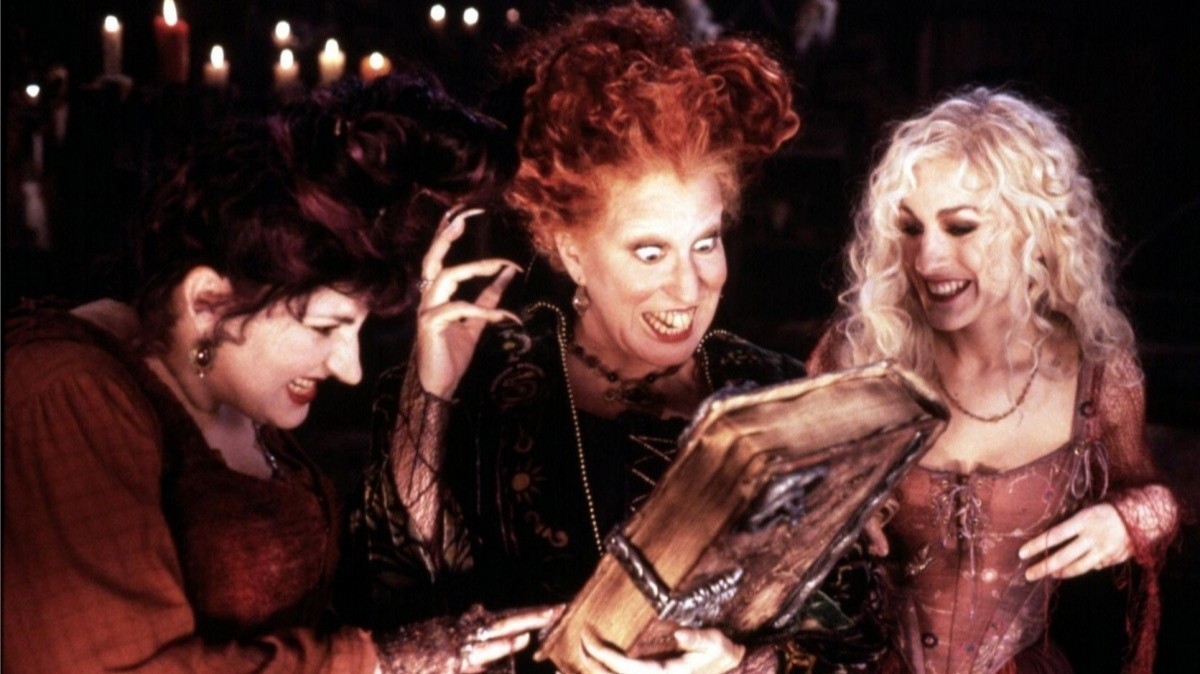
Точно не ясно, откуда в VIII веке пошло поверье о ведьмах и колдуньях. Возможно, оно появилось в период инквизиции, так как в деревнях проводились ритуалы по изгнанию ведьм. Люди разводили костер, на котором сжигали соломенное чучело ведьмы, а потом с зажженными факелами обходили все дома в поселении.
В Средние века в народе бытовало суеверие, что именно в Вальпургиеву ночь на шабаш собирается вся нечистая сила. Поверье о ведьмах было отражено и в трагедии «Фауст» Иоганна Вольфганга Гете в главе «Сон в Вальпургиеву ночь».
История и традиции Вальпургиевой ночи
В Средневековье у Вальпургиевой ночи не было фиксированной даты. Кельты отмечали праздник после того, как отцветет боярышник. Эту языческую праздничную ночь противопоставляют Хэллоуину, который символизирует канун Дня всех святых и начало зимы. Получается, что Вальпургиева ночь символизирует канун Дня святой Вальбурги и начало весны.
У Вальпургиевой ночи есть свои необычные традиции, например, жители Великобритании сохранили обычай плясать вокруг украшенного цветами шеста 1 мая. Древние кельты жгли костры и выпускали скотину из хлевов после зимовки — этот праздник назывался Белтейн. Важным ритуалом было прогнать животных между двумя рядами этих костров, чтобы избавить их от болезней.
Собиратель русских сказок Александр Афанасьев упоминал, что на Руси тоже бытует поверье, что в эту ночь ведьмы слетаются на Лысую гору отчитаться перед Сатаной, а потом плясать и пировать возле костра.
У итальянцев есть схожая с колядованием традиция: в последний вечер апреля или в первый вечер мая компании деревенских юношей обходят дома с украшенной цветами и лентами зеленой веткой. Они поют песню, возвещают о приходе весны и просят у соседей подношений. Сицилийцы на Вальпургиеву ночь выходят в поле и плетут из цветов венки или собирают букеты.
В Словакии и Чехии Вальпургиева ночь представляет собой весенний аналог Нового года — на главной площади города или поселка устанавливают высокое хвойное дерево, украшенное лентами, и венками. На ветки ели или пихты развешивают сдобные калачи.
В Словении и Хорватии молодежь устраивает ритуальные шествия, где участники с песнями обходят дома местных жителей и просят угощения за добрые пожелания.
Как праздновать Вальпургиеву ночь
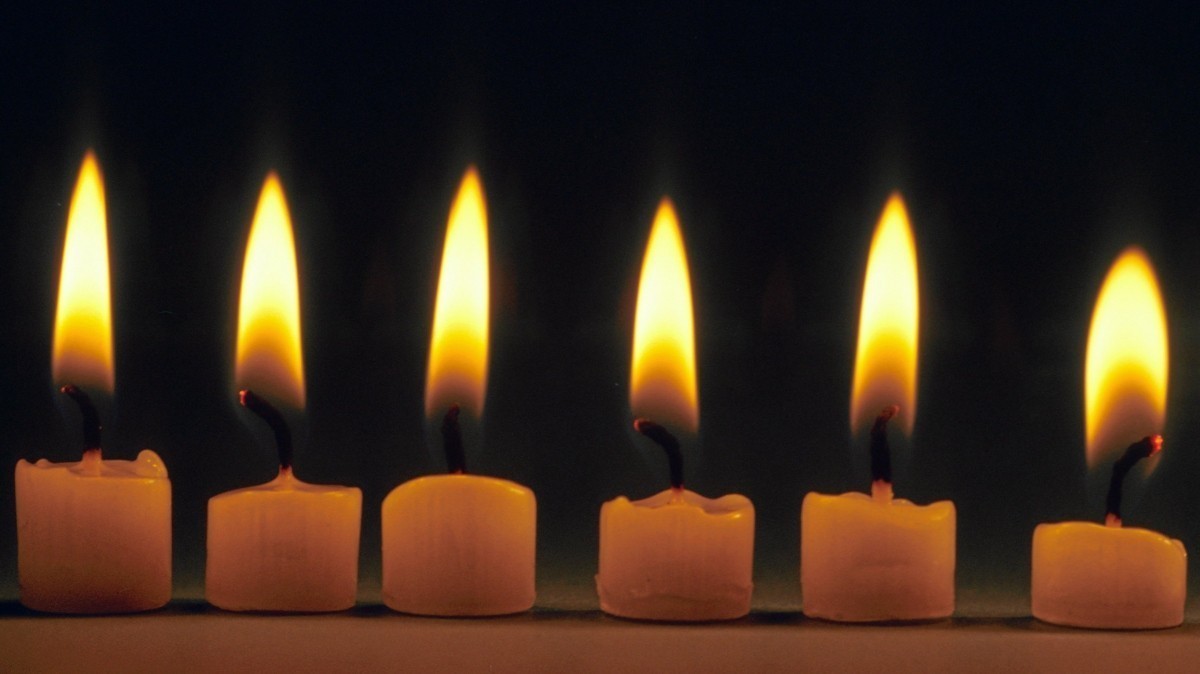
Считается, что особая магическая атмосфера с 30 апреля на 1 мая может помочь избавиться от негатива. Именно поэтому за столетия появилось множество ритуалов, которые можно выполнить в Вальпургиеву ночь.
Чтобы убрать из мыслей и дома плохое, а взамен получить только счастье и удачу, необходимо зажечь свечу в темной комнате, написать на листе бумаги все, что тревожит, и потом сжечь со словами: «Гори оно все синем пламенем!». Бумага и свеча должны прогореть до конца, иначе отрицательные моменты так и останется в вашей жизни.
Также можно проделать нехитрый ритуал на исполнение желания: написать мечту на кусочке тканевой ленты и потом повесить ее на ветку дерева. Считается, что все сны в ночь с 30 мая на 1 мая — вещие. Возможно, они предостерегут от ошибки или направят на правильный путь. Поскольку у многих народов Вальпургиева ночь связана прежде всего с огнем, можно разжечь костер и выбросить в пламя ненужные вещи и мусор.
Существует ритуал для улучшения финансовой составляющей. Проводить его нужно строго в первую минуту после полуночи. Потребуется одна золотая свеча, шесть зеленых свечей, девять белых свечей, эфирное масло сосны и соль. Золотая свеча устанавливается в центре стола, затем окружается зелеными, а потом белыми свечами. В первую минуту после полуночи нужно насыпать соль вокруг белых свечей, а после зажечь золотую, зеленые по часовой стрелке и повторить то же самое с белыми. Обойти стол трижды, напевая следующие слова: «Трижды Юпитер вокруг Солнца обойдет, деньги мне принесет». затем потушить свечи в обратном порядке.

Язычники верили, что если на порог дома насыпать травы или песка, нечистая сила не сможет войти и навредить, пока не пересчитает все травинки и песчинки. Также от ведьм и других нечистых оберегали огнями, зажигая свечи, камины и печи.
Чтобы сохранить молодость и упругость кожи, девушки умывались утренней росой. Знахарки и травницы уходили в лес на ночь за растениями, так как считалось, что в Вальпургиеву ночь они наделяются магическими свойствами.
Что нельзя делать в Вальпургиеву ночь?

В магическую ночь нельзя приносить в дом с больным человеком сирень. По поверью, яркий запах растения может заманить его в мир мертвых.
В Вальпургиеву ночь нельзя надевать на себя ту одежду, в которой вы пережили негативные эмоции. Считается, что ткань сохраняет отрицательную энергию и только усилит ее в этот период. Кроме того, не надевайте одежду черного цвета.
Важно следить за своими словами. Особенно не произносить те, которые «призывают» нечистую силу, например, чертыхаться. Кельты и скандинавы верили, что агрессия и бранные слова могут сделать вас игрушкой в руках потусторонних сил.
В стародавнюю пору люди наделяли времена года особенной силой. Ничего странного — их жизнь зависела от природы, поэтому крестьяне издревле приписывали ей магические способности. Часть из них объяснилась научными открытиями, а часть так и осталась в сфере непознанного.
commons.wikimedia.org
Происхождение
В Европе наиболее могущественными считались зима и лето. Это объяснялось зависимостью людей от природы и погоды. Зима — сезон темноты, холода, болезней, смерти и голода. Темнота и холод возникали естественным путем, болезни следовали за холодом. Следом прибывал и голод: если год выдался неурожайный, в конце января заканчивались запасы зерна и приходилось ограничивать пищу. Самыми скудными месяцами были февраль и март — момент, когда старых продуктов не оставалось, а новых еще не было. Как следствие, увеличивалось и количество смертей — от болезней и недостатка еды. Потом становилось теплее и светлее, и вскоре наступало благодатное лето, когда в сельской местности было возможно пропитаться, не имея никаких запасов. В России про лето говорили, что, дескать, лес прокормит, и это чистая правда: подножная зелень, корни, ягоды, грибы, орехи, семечки… Да и охотиться проще. Кроме того, весной начинала плодиться домашняя живность, а с ростом травы и возвращением к выпасу скота на открытых пастбищах появлялось и хорошее молоко. Особое значение предки европейцев придавали длительности светового дня: они отмечали время, когда световой день становился короче или длиннее.
Почти во всех европейских странах существовали два праздника. Первый, в конце осени или начале зимы, был связан с наступлением темного и холодного времени. Весной отмечали увеличение светового дня, появление первых растений и начало выпаса скота. В Британии этот праздничный сезон именовался Белтайн, у древних римлян — Флоралии, в России — Пролетье, а у немцев — Вальпургиева ночь.
Слово «Флоралии» было связано с именем Флоры — богини растительности. Римляне поклонялись ей в конце апреля и начале мая, когда все цветет. Считалось, что принесенные Флоре гирлянды цветов сулят хороший урожай. Праздник древних римлян оставил след во всех странах Европы, до которых они добрались, а их было немало.
commons.wikimedia.org
Пролетье
Славяне верили, что на Пролетье появляется странное существо — Ярила. Описывали его как пригожего, синеглазого, светловолосого и кудрявого, одетого в белые одежды парня с венком цветов на голове и пучком колосьев в руках. Где он пройдет — там зелень вырастает, куда посмотрит — там зерно из земли само всходит, а если человека встретит — так тот непременно в тот же день влюбится и с объектом своей любви непременно переспит, зачав при этом ребенка.
В современных источниках Ярилу иногда называют богом солнца, но это не так: богом солнца у славян считался Дажьбог. Хотя в некоторых землях Ярилу и считали сыном Перуна, для большинства племен он не входил в число божеств и был просто персонификацией весны и плодородия, как ученые называют, «ритуальным персонажем». К этой же категории относились Кострома, Купала, Коляда, Масленица и другие герои мифологии. Нынешние художники обычно рисуют Ярилу этаким романтично-пасторальным существом, но наши предки изображали его как здорового, высокого, плечистого молодца с огромными гениталиями — крестьяне прошлых лет отлично знали, откуда у людей берется это самое плодородие, и не камуфлировали его.
В Восточной Европе
У живших на территории современной России славян Пролетье со временем исчезло, а вот в Болгарии, Сербии, Македонии и Румынии этот праздник отмечается до сих пор, пережив все попытки превратить 1 мая в «День международной солидарности трудящихся». Горожане традиционно отмечают его на природе (в лесу или на пикнике) и праздником в своем саду, а крестьяне — в огороде. Посвящен этот день пробуждению природы, и в деревнях существуют обряды для защиты скота. Повсеместно в конюшнях и на скотных дворах подвешивают ветки с зелеными листьями, дома украшают цветами и лентами, а вечером разжигают большой костер, через который принято прыгать — для сохранения удачи и здоровья на весь следующий год. Любопытно, что в России традиция прыжков через костер тоже существовала, но не на Пролетье, а в ночь накануне Ивана Купалы.
commons.wikimedia.org
Белтайн
Кельтский Белтайн родился, видимо, в континентальной Европе, в Британии же раньше всех зафиксирован в Ирландии. Он был посвящен началу выпаса скота на пастбищах и считался началом лета. Друиды накануне вечером проводили обряды для защиты домашней живности, зажигали ритуальные костры.
При христианстве друиды исчезли, но традиции остались. Самая яркая из них — огонь. Белтайн считался праздником света, потому в ночь перед этим днем издревле принято было разжигать костер. Часто разводили не один, а два костра и прогоняли между ними скот для защиты от болезней.
Второй обязательный атрибут — цветы. Традиция родилась задолго до появления на Британских островах христианства и происходила из кельтского культа растений. Поэтому для украшения использовали не все цветы, а строго определенные — белые или желтые. Скептики утверждают: это результат того, что большая часть весенних цветов окрашена так, но предки нынешних британцев верили, что гирлянды из примул, рябины, боярышника, терновника и калужницы защитят их дома и скот от бед. Каждое растение наделяли особой силой, и сочетание их не было случайным — они среди прочего защищали дом от козней фейри. Словом «фейри» именовали маленьких уродливых созданий, живущих рядом с людьми и непрерывно им пакостящих: то выпьют молоко, то испортят хлебное или пивное сусло, то приманят мышей, то разорвут мешки с мукой — словом, сущая напасть. Также считалось, что фейри способны подменить младенца в колыбели на своего детеныша. Люди верили, что в канун Самайна и в канун Белтайна сверхъестественные существа обладают особой силой и поэтому пакостят с утроенной энергией.
Также в каждом доме наряжали The May Bush — «Майский куст»: кустик боярышника или терновника убирали цветами и яркими лентами и хранили в доме 30 дней. Ученые считают, что это тоже отголосок кельтского культа деревьев, по народной же мифологии «Майский куст» был призван задобрить волшебный народ, который ирландцы называли племенами богини Дану или ши, шотландцы — сидами, а континентальные кельты — алвами или эльфами. Это те самые эльфы, которых обессмертил в своих книгах Толкин, — прекрасные создания, живущие в параллельном, невидимом для людей мире и не вмешивающиеся в людские дела. Терновник и боярышник считались деревьями эльфов, и подрезать, рубить, выкорчевывать и даже срывать ветки с них можно было только один раз в году — в ночь накануне Белтайна. Собственно, поэтому эти кусты растут в Британии в таких невероятных количествах — разрастаются они быстро, а подрезать их можно лишь раз в году. Предки нынешних ирландцев верили: до того как поселиться в невидимом мире, ши долго и кроваво воевали с людьми, — поэтому предпочитали не обижать их лишний раз.
Также в деревнях устанавливали «Майский шест» — столб, украшенный цветами и лентами. Вокруг него танцевали, взявшись за концы лент. Считается, что эта традиция тоже восходит к кельтскому культу деревьев.
123rf.com
«Ночь ведьм»
Континентальные кельтские народы пошли в своей вере в темные силы еще дальше: у них Вальпургиева ночь (между 30 апреля и 1 мая) — это время разгула всей нечистой силы разом, когда она покидает свои норы и собирается праздновать ночь своего наибольшего могущества. Немцы до сих пор незатейливо называют ее Hexennacht — «Ночь ведьм». Считается, что в честь Hexennacht все ведьмы Германии собираются на шабаш на горе Брокен, где танцуют в лунном свете до упаду и поклоняются своему повелителю — Сатане. Место было выбрано, как считают ученые, из-за наличия так называемого Брокенского призрака — уникального оптического эффекта, из-за которого наблюдатель на верхушке этой горы видит темную фигуру, которая движется ему навстречу. На самом деле это его собственная тень на поверхности тумана, но «нехорошей» горой Брокен считается многие столетия.
Поэтому в эту ночь люди старались не выходить из дому в одиночку после заката, вместо этого они собирались всей деревней и проводили странноватые, пришедшие из раннего Средневековья обряды изгнания ведьм, в каждой деревеньке свой собственный.
Схожие традиции существовали и у соседей Германии — Венгрии, Польше и Чехии. Здесь Вальпургиева ночь тоже считалась временем буйства нечистой силы, и селяне принимали меры для защиты, проводя обряды изгнания ведьм, часто сопровождавшиеся сжиганием на костре соломенной куклы, символизировавшей абстрактную нечисть.
commons.wikimedia.org
Лысая гора
В восточноевропейских странах местом шабаша считался не Брокен, а Лысая гора. Гор с таким названием насчитывается около десятка, но главная — Лысая гора под Киевом. Прочие традиции были близки к германским, и выходить этой ночью из дома считалось небезопасным — дескать, если встретишься с летящей на шабаш ведьмой, она тебя непременно туда утащит для развлечения гостей. Трудно сказать, какая часть этого предания была придумана, чтобы дети по ночам не бегали в лес, но существует оно многие годы.
Примечательно, что при всей разнице между культурами в обрядах есть общие черты. Так, во всех странах роса наутро после Вальпургиевой ночи считается целебной — ею полагалось умыться для сохранения хорошего здоровья на весь год. Еще одно общее свойство — поклонение деревьям и украшение всего и вся цветами.
123rf.com
Праздник сегодня
С принятием христианства языческие традиции слились с церковными, но праздники, приуроченные к 1 мая, языческого оттенка не утратили. Церковь боролась с этим многие годы, запрещая то и это, но так и не преуспела, и во многих регионах старинные торжества благополучно дожили до наших дней. В Шотландии и Ирландии до сих пор отмечают Белтайн: жгут всю ночь костры и веселятся. Кое-где между двумя кострами до сих пор прогоняют овцу, а в некоторых частях Ирландии через огонь принято прыгать точно так же, как в Восточной Европе, — на удачу и на здоровье. Обитатели английских деревень до сей поры пляшут вокруг Майского шеста. Немцы перестали преследовать ведьм, но звонят по ночам в церковные колокола и проводят красочные карнавалы, на которых дети наряжаются в ведьмочек и волшебников. Повсеместно в Европе проходят праздники весны — веселые, шумные, яркие, с танцами, музыкой, массой развлечений для детей и с домами, украшенными цветами.
Подготовила Елена Чернявская
Среди народов Европы Вальпургиева ночь является традиционным праздником, его значение имеет самые разные направления жизни. Посвящают его плодовитости и празднуют с 30 апреля на 1 мая. Связывают эту ночь с ведьмами, которые начинают пировать и совершать различные непотребства. В языческие времена празднование посвящали богине плодородия.
Содержание статьи:
- 1 История появления праздника
- 2 Значение Вальпургиевой ночи
- 3 Традиции празднования
- 4 Что запрещено делать в праздник
- 5 Какие обряды можно проводить
- 5.1 Для привлечения любви
- 5.2 Для красоты
- 5.3 На вдохновение
- 5.4 На исполнение желаний
- 5.5 Для избавления
- 6 Дата празднования Вальпургиевой ночи в 2022 году
- 7 Заключение
История появления праздника
Как уже было сказано, в Европе праздник широко распространен и означает приход весны. А вот у народов Германии есть своя легенда, которая гласит, что в ночь с 30 апреля на 1 мая собиралась вся нечистая сила. Вместе с этим отмечался и праздник солнца. Сегодня об этом, в качестве напоминания, остался только розжиг огромного костра. Некоторые же продолжают обращаться к солнцу, отдаляясь на вершины гор.
В древней Шотландии при наступлении 1 мая люди заводили хороводы вокруг майских деревьев. Поэтому сейчас эта дата у них называется праздником весны.
Мнение о том, что в эту ночь собираются ведьмы и другая нечистая, сила появилось в конце восьмого века. Когда по Европе начало распространяться христианство, эту версию пытались подавить, а саму традицию празднования полностью исключить. Но все же языческое празднование оказалось стойким, а жители продолжали собираться ночами на пустырях, чтобы отпраздновать и предаться весенним традициям.
Значение Вальпургиевой ночи
Свое название это ночь получила от имени святой Вальпурги. Она была монахиней, которая жила в восьмом веке. Из Англии Вальпурга прибыла в Германию для основания монастыря. 1 мая она была канонизирована, именно в этот день в перечне римских святых отмечается день Вальпурги.
Даже сейчас этот праздник относят к самым противоречивым среди языческих. С одной стороны в нем нет ничего плохого, ведь отмечают рассвет весенних сил, но с другой стороны именно в его ночь собираются все демоны и другая нечисть для разгула у костров.
А вот древние кельты придавали этому празднику не только весенний смысл, но и любовный. В Чехии к Ведьминому костру относились с почтением, возле него проводили обряды по изгнанию нечисти. В большом пламени костра сжигали сделанные чучела ведьм. После этого поджигали факелы, обходили дома и звонили в колокола.
Есть у Вальпургиевой ночи и волшебное значение. Считается, что растения, которые были сорваны в эту ночь обладают магическими свойствами. В этом плане празднование похоже на Ивана Купала. Славяне верят, что собранные травы мели защищающие свойства.
Традиции празднования
В каждой стране традиции празднования отличаются, но время от времени одна или несколько из них заимствуется у соседей. Так, например, итальянцы в эту ночь ходили по домам с сорванными майскими травами которые украшали лентами. Если молодой человек хочет жениться на девушке, то он оставлял растение у двери дома возлюбленной. Девушка, взявшая растение давала понять, что принимает предложение.
В Чехии и Словакии в эту ночь очищали пихту или ель от коры посреди площади. После этого ее украшали цветами, угощениями и лентами. Вокруг такого дерева водили хороводы.
Славяне и Хорваты проводили праздники для молодых людей. Пары или компании ходили в гости с пожеланиями добра, хорошего урожая, достатка. За это их вознаграждали.
Александр Афанасьев, известный собиратель русских сказок, говорил, что в России тоже есть поверья о разгуле нечисти в эту ночь. Нечистая сила слетается на Лысую гору и отчитывается перед Сатаной. После чего они приступают к пиршеству и демоническим пляскам.
Сегодня этот праздник у нас не так распространен. Большего значения придают западному Хэллоуину и древнеславянскому празднику дню Ивана Купалы. Однако, некоторых традиций все же придерживаются. Например: люди имеющие свой огород или дачный участок начинают сжигать мусор, накопившийся за год. Другие же занимаются поиском и сбором трав, а некоторые на отрезанной ленте пишут то, о чем желают больше всего, и привязывают ее к дереву или к “майскому шесту”. Кроме того, именно с 1 мая у нас начинаются праздники и наступают длинные выходные. Люди на Руси тоже часто отмечают рассвет весны именно на природе.
Что запрещено делать в праздник
Итак, мы узнали как отмечают Вальпургиеву ночь и в какое время года она проходит. Но существуют также поверья, которых нужно придерживаться празднуя эту дату.
Согласно им, в праздник нельзя делать следующее:
- Ставить в домах букеты сирени. Она способна своим ароматом одурманить человеческое сознание и забрать в иной мир. Особенно опасно это делать если в доме находятся дети, пожилые или больные люди. Нельзя этого делать и при беременности.
- Запрещено заводить разговоры о любой нечисти, ведь в этот период она особенно активна. В целом в этот период лучше внимательно подбирать слова. Любая неосторожность может причинить вред.
- Девушка или женщина планирующая праздновать Вальпургиеву ночь не должна надевать черный наряд. Согласно поверьям Сатана может принять ее за ведьму, а из этого вытекают неприятные последствия.
- Категорически нельзя надевать одежду, которая связывает девушку с неприятными воспоминаниями или ситуациями. От нее будет веять плохая энергетика, которую почувствует нечистая сила. Таких девушек она может схватить и не отпустить обратно в мир живых.
Какие обряды можно проводить
Как и в другие подобные праздники, на Вальпургиеву ночь можно проводить некоторые обряды. Они направляются на исполнение желания, обретение любви, восстановление здоровья. После того как солнце скроется за горизонтом, можно заниматься сбором трав, которые наделяются магическими свойствами. Считается, что в эту ночь можно пройти посвящение в ведьмы. Свои силы начинающая колдунья получит от самого дьявола. Рассмотрим несколько примеров обрядов.
Для достижения максимальной эффективности обряда, лучше его проводить 30 числа, но закончиться он должен уже с наступлением первого числа.
Для привлечения любви
Обряд поможет тем, у кого безответные чувства. При наступлении вечера около своей кровати нужно поставить две свечки розового цвета. Встаньте на колени и три раза произнесите текст заговора:
Обязательно дождитесь пока свечи полностью сгорят, а воск остынет. Положите остатки свечи под подушку. Запрещено вставать с постели до наступления утра и разговаривать с кем либо. Расплавленный воск нужно хранить под матрасом пока не получите нужный результат.
Для красоты
Этот обряд предназначен только тем, кому уже исполнилось 25 лет. Вечером с 30 числа на 1 соберите любые растения и цветы, сплетите из них венок. Ночью отправляйтесь к реке, на берегу снимите все одеяния и произнесите:
Затем нужно зайти в воду и полностью в нее погрузиться. Выйдите на берег и наденьте сплетенный венок. Оставаться голой нужно до первых лучей солнца.
На вдохновение
Ритуал поможет творческим личностям, которые испытывают кризис. Желательно проводить его на растущую луну. Необходимо найти возвышенность, подняться на нее и произнести текст заговора двенадцать раз:
На исполнение желаний
На чистом листе нужно нарисовать пятиконечную звезду. В ее центре напишите свое имя. На каждом луче нужно в утвердительной форме написать то, о чем желаете больше всего. Например “Я устроился на стабильную работу с высокой зарплатой”. Лист с рисунком нужно положить под подушку и лечь спать до того, как наступит полночь. Утром листок нужно сжечь, а пепел от него выбросить через окно.
Для избавления
Следующий ритуал поможет убрать из вашей жизни то, что вам сильно мешает, болезнь, долги, депрессию, то из-за чего у вас не получается полноценно жить. До того, как наступит полночь напишите на листе вашу самую большую проблему. Зажгите красную свечку и сожгите использованный лист. Дождитесь, пока свеча полностью сгорит. Остаток свечки вместе с пеплом заверните в ткань и до того, как взойдет солнце закопайте их там, где не бывает скопления людей.
Дата празднования Вальпургиевой ночи в 2022 году
Часто люди задаются вопросом какого числа в 2022 году будет отмечаться Вальпургиева ночь. В нынешнем году ничего не меняется – как и в прошлые года, отмечают праздник в ночь с 30 апреля на 1 мая. В эти дни можно проводить обряды, ждать вещие сны, а желающим стать ведьмами можно попытаться заполучить долгожданную силу.
Заключение
Итак, мы узнали где празднуют Вальпургиеву ночь и какие обряды и традиции присущи этой дате. Однако, несмотря на то, что праздник связан с провидицей и имеет христианские корни, к нему нужно относиться с осторожностью. Это время используется для черной магии, а ночью в мир проникает нечисть, сея раздор и бесчинства.


